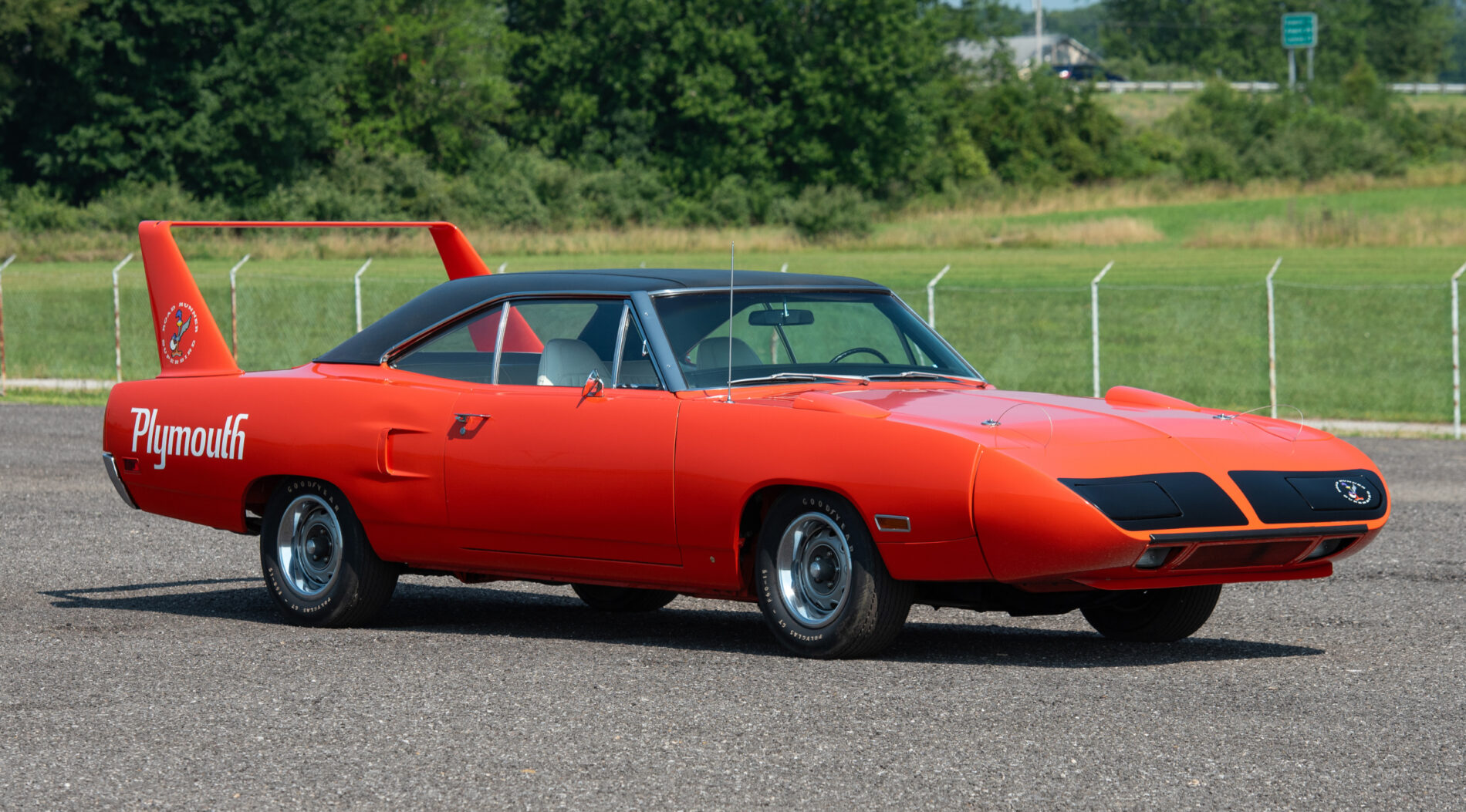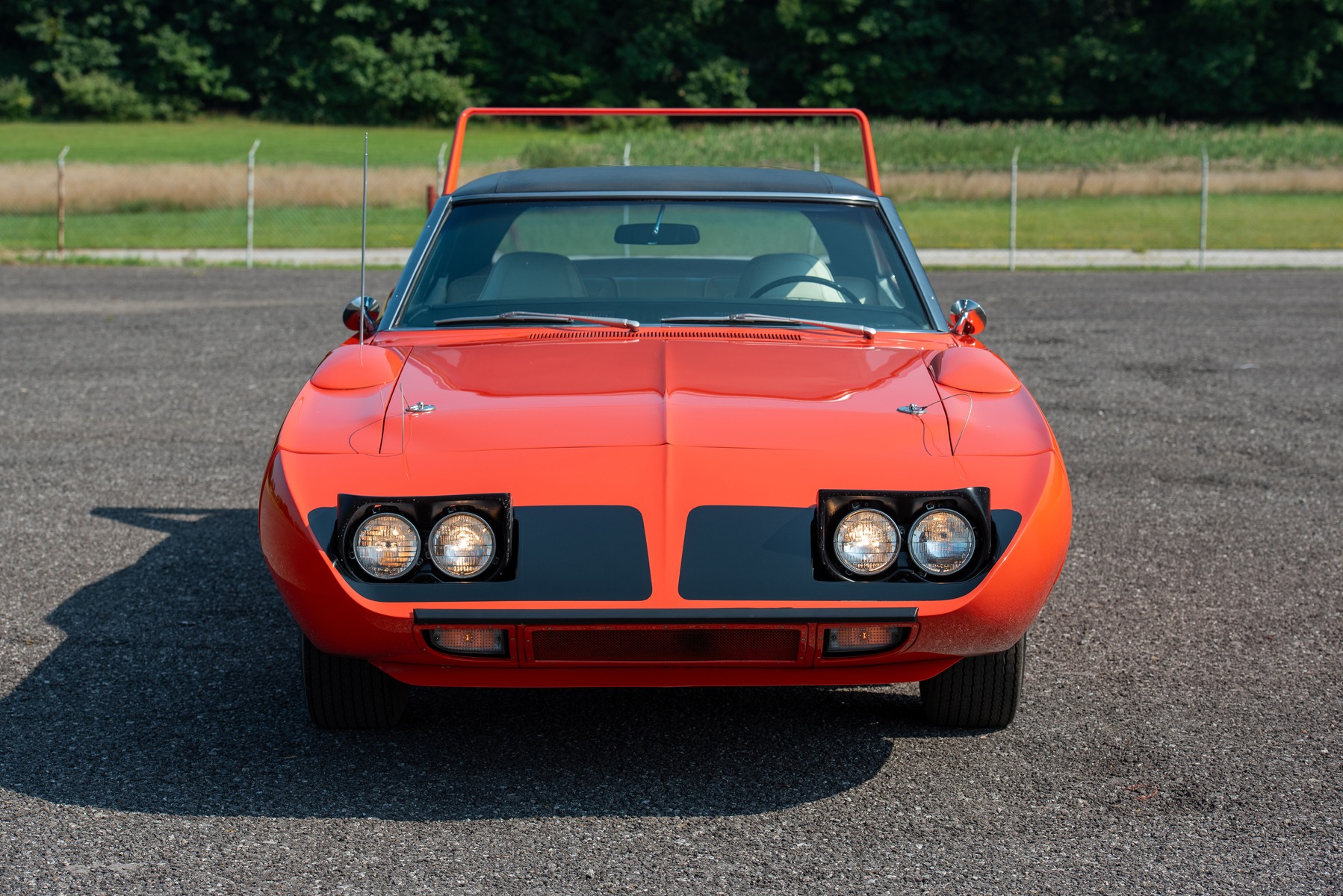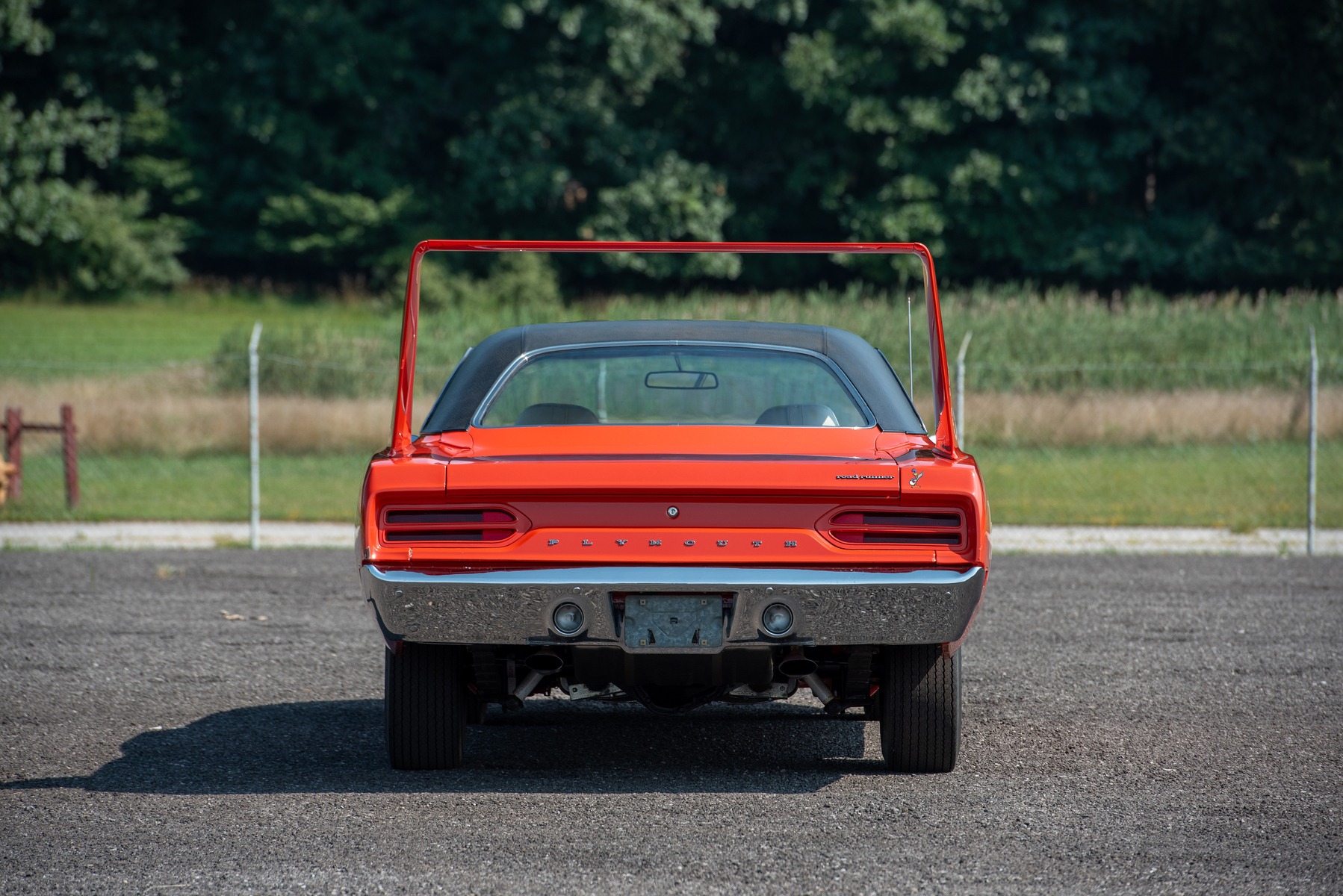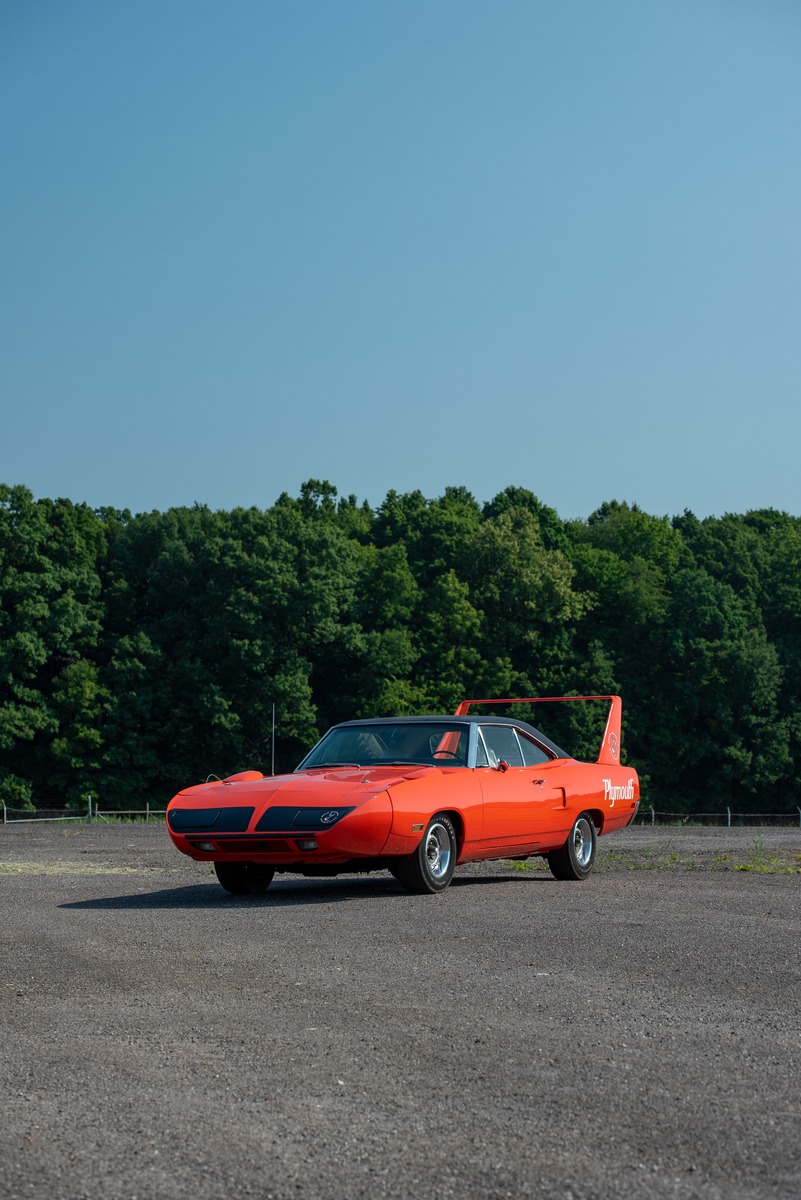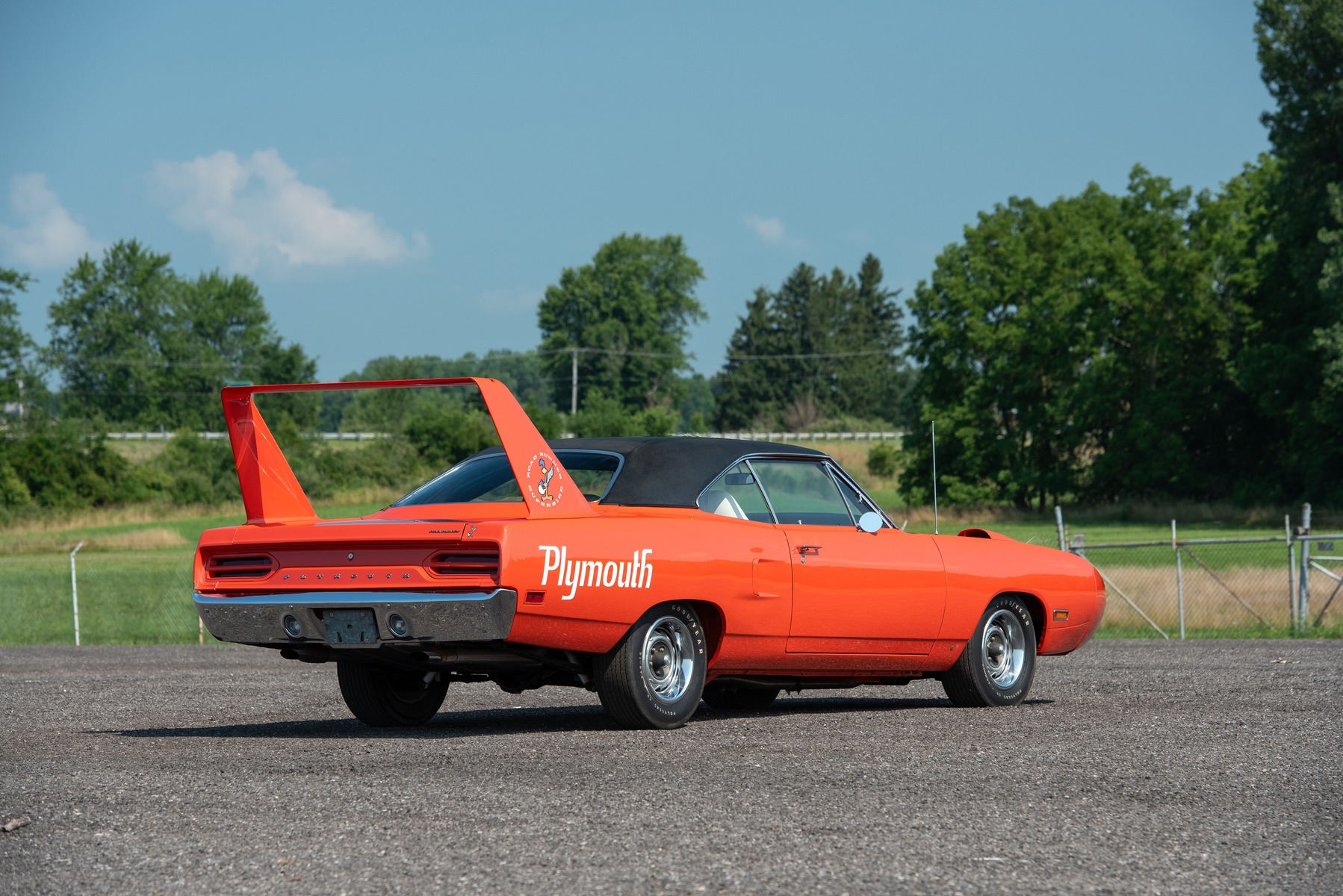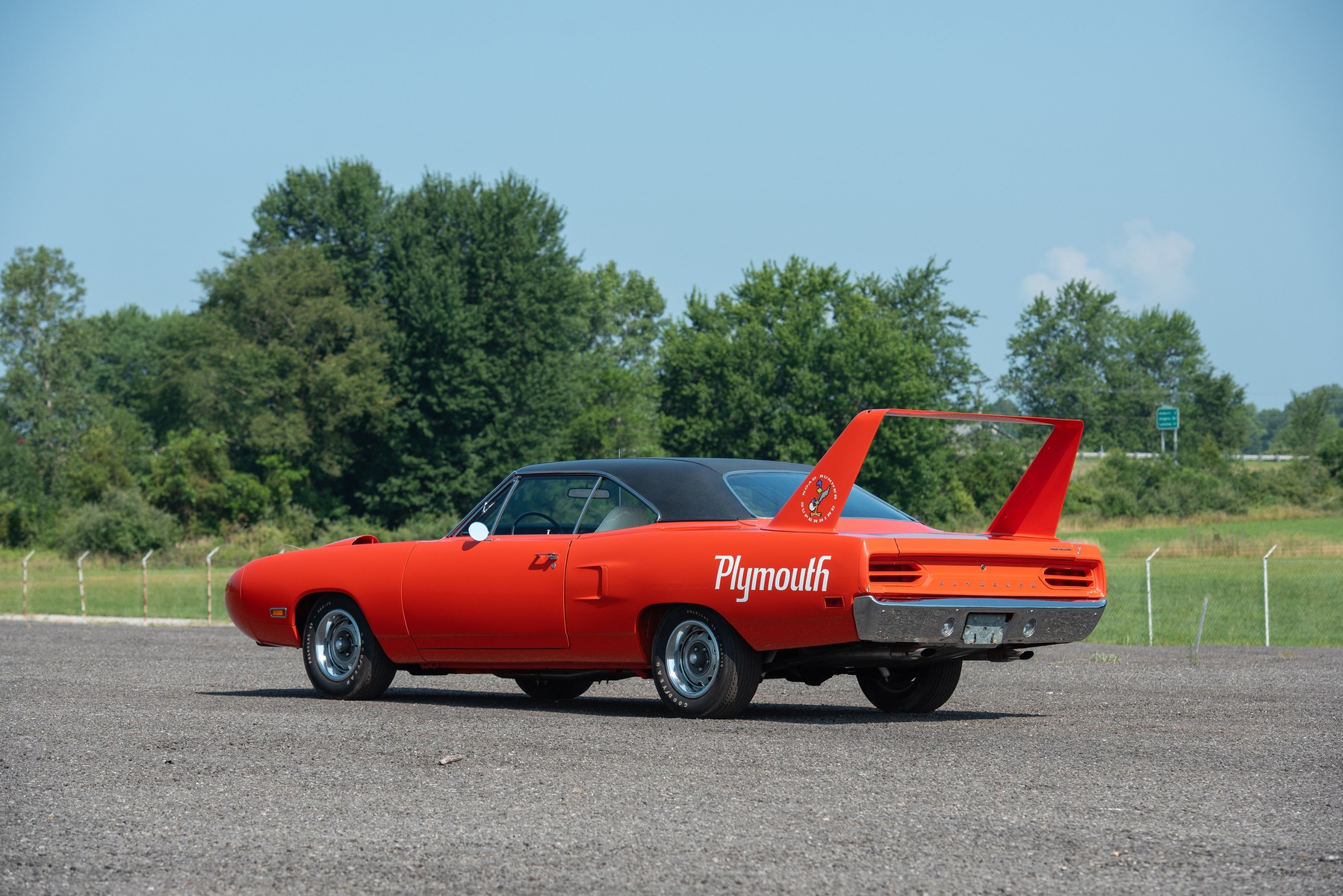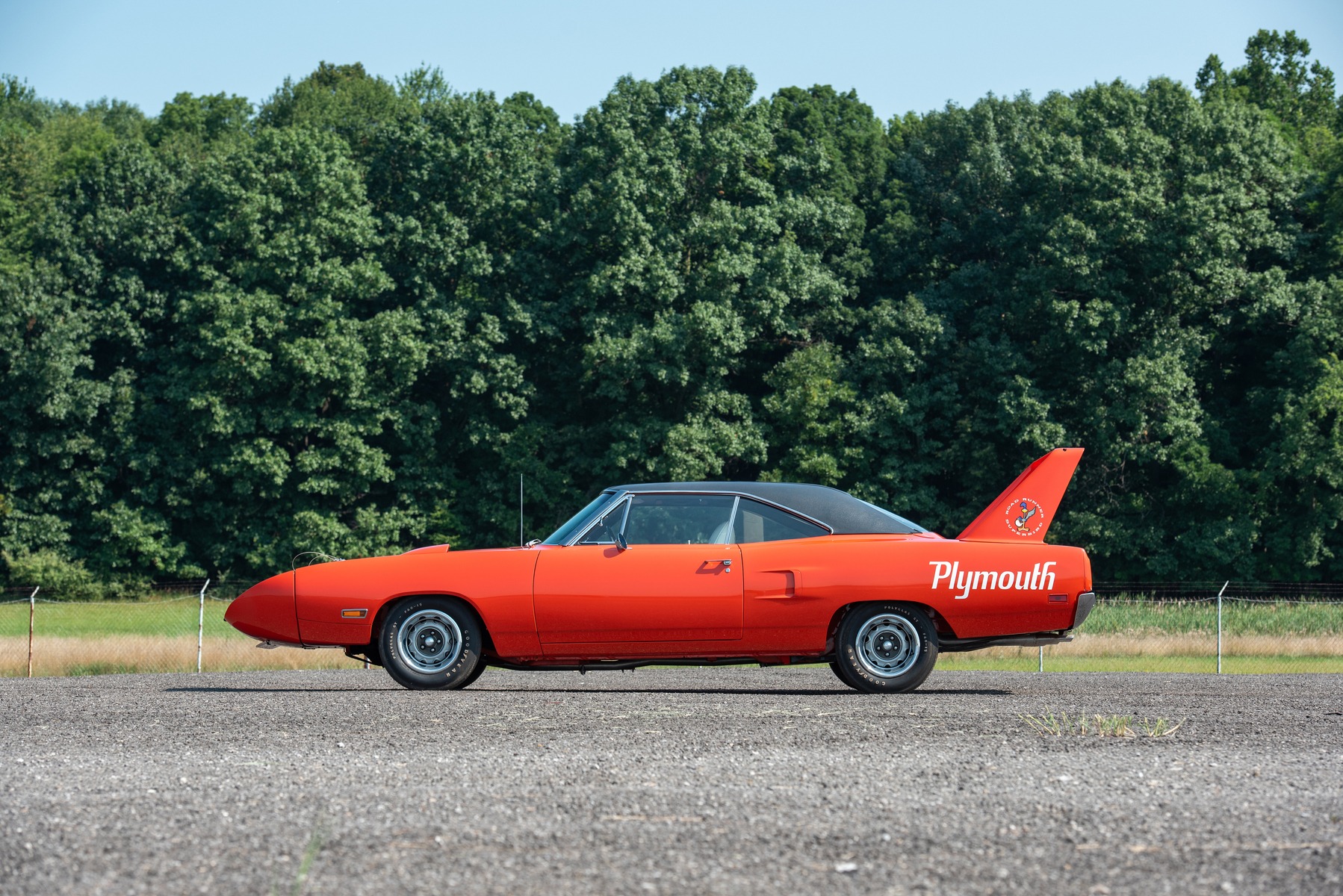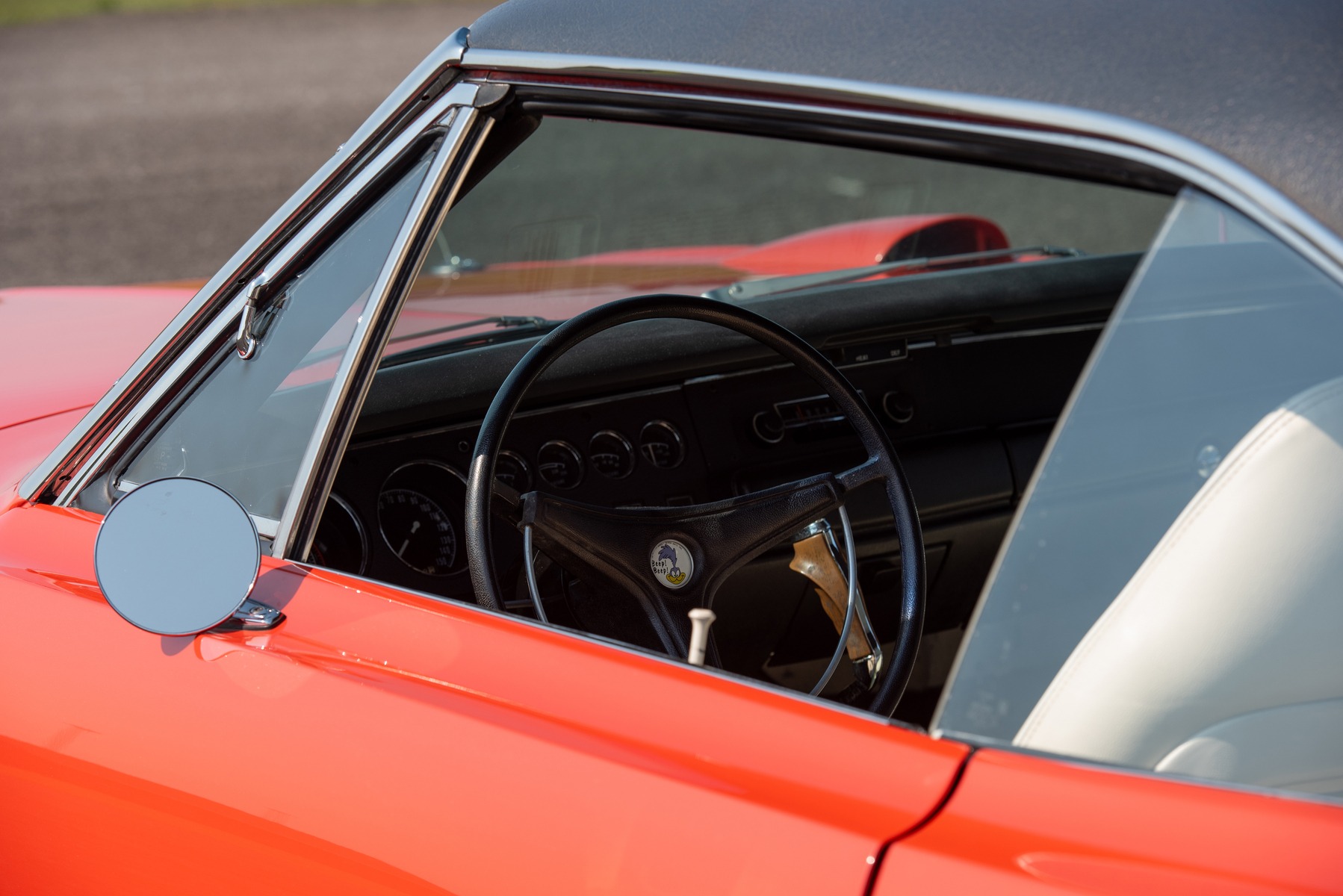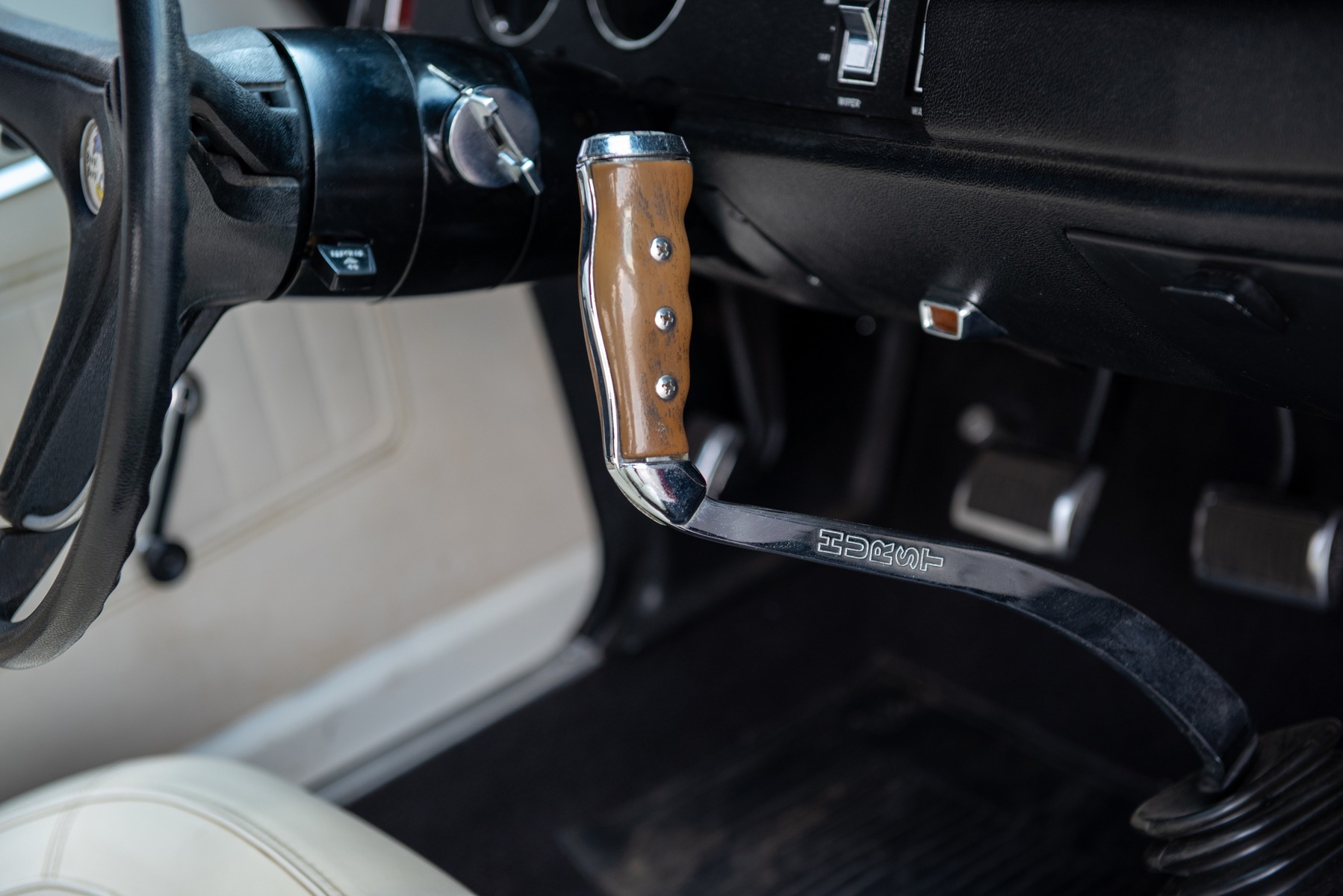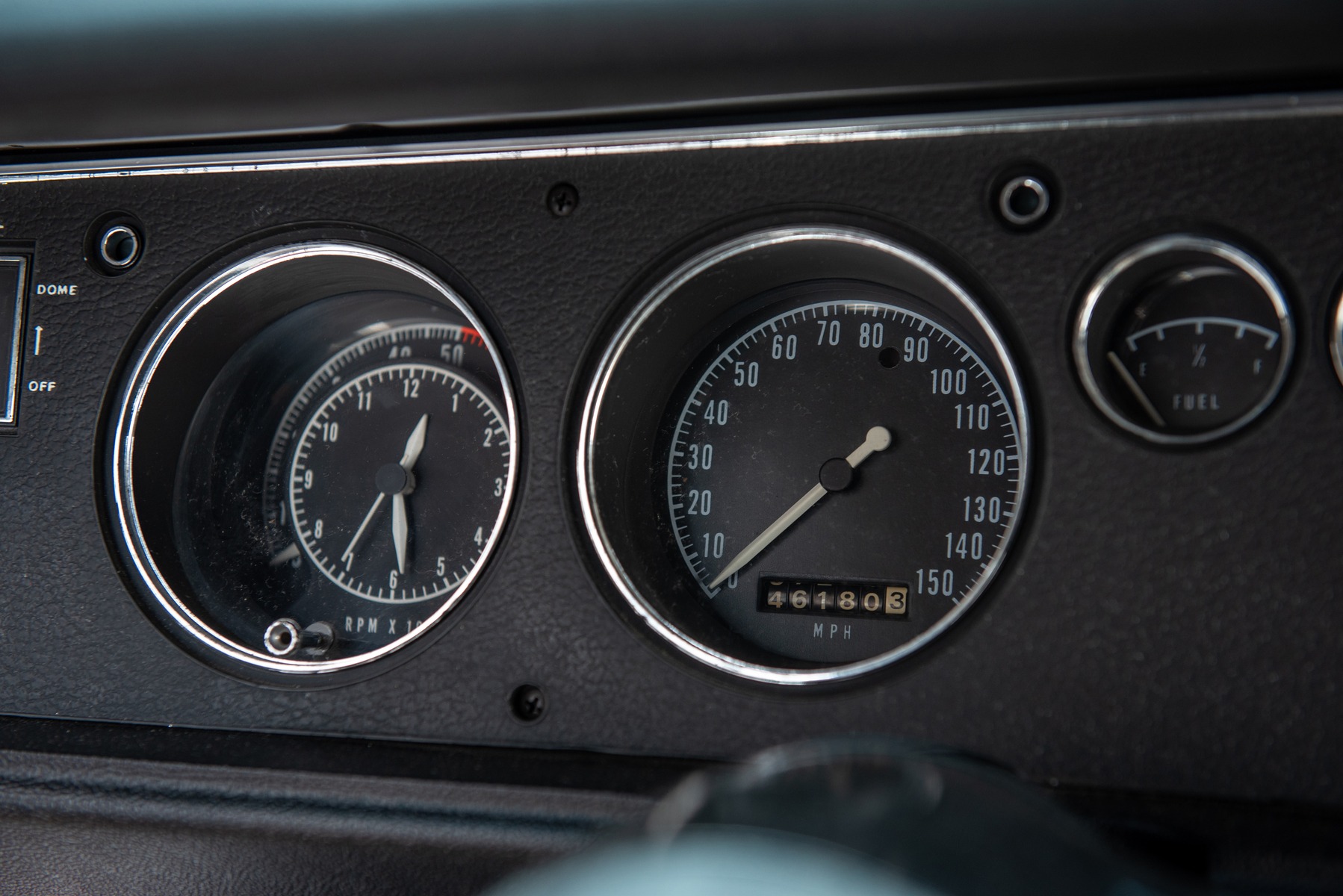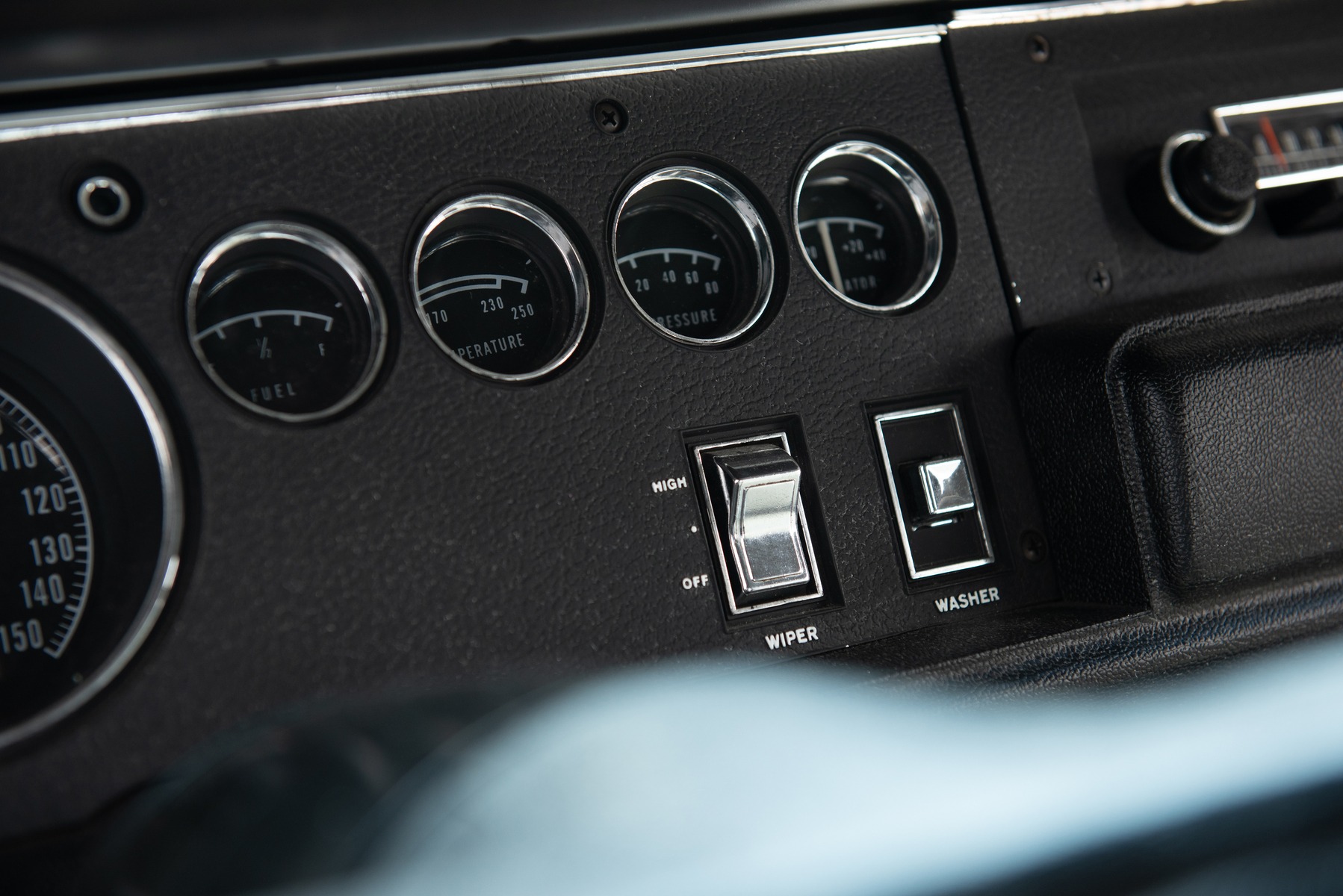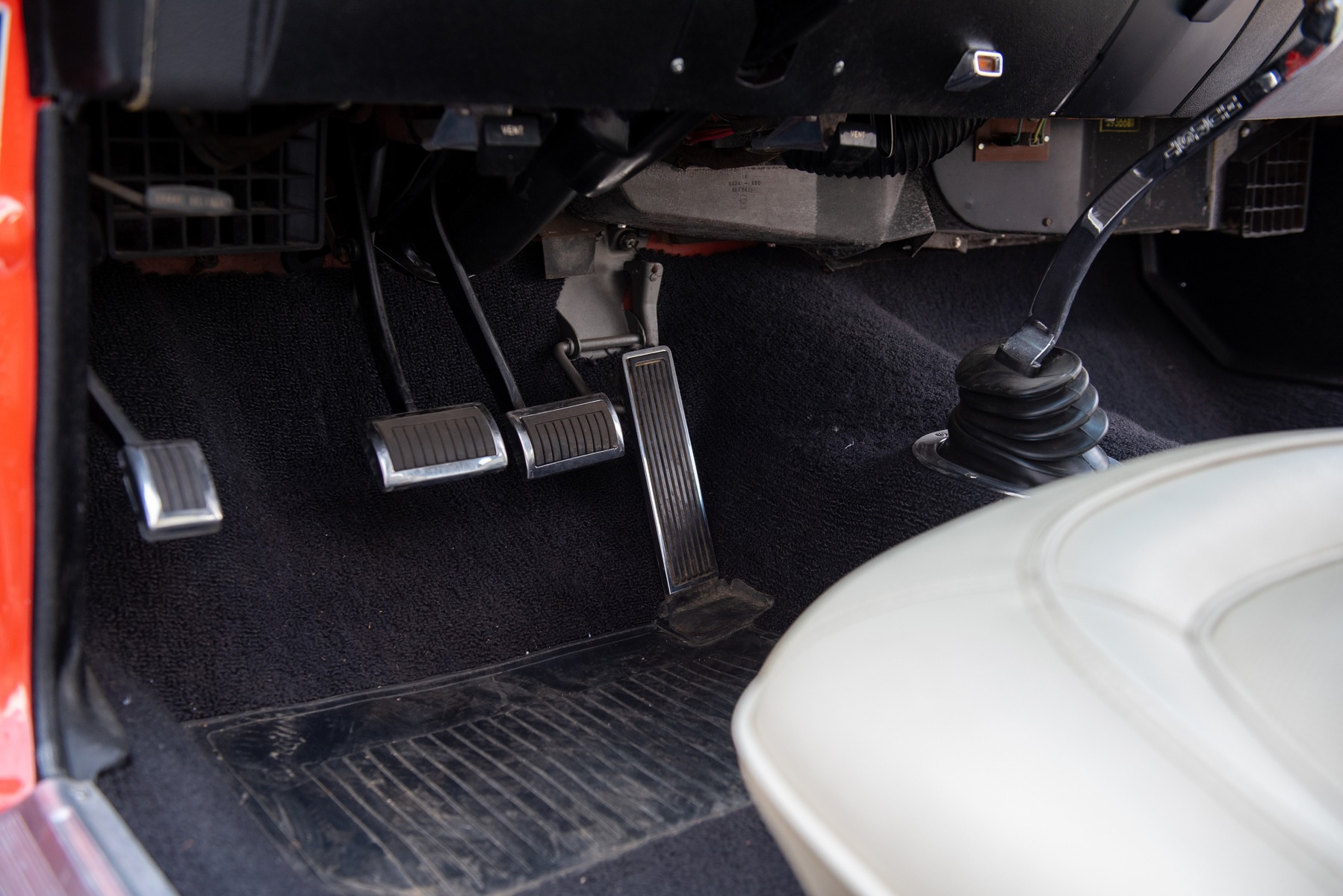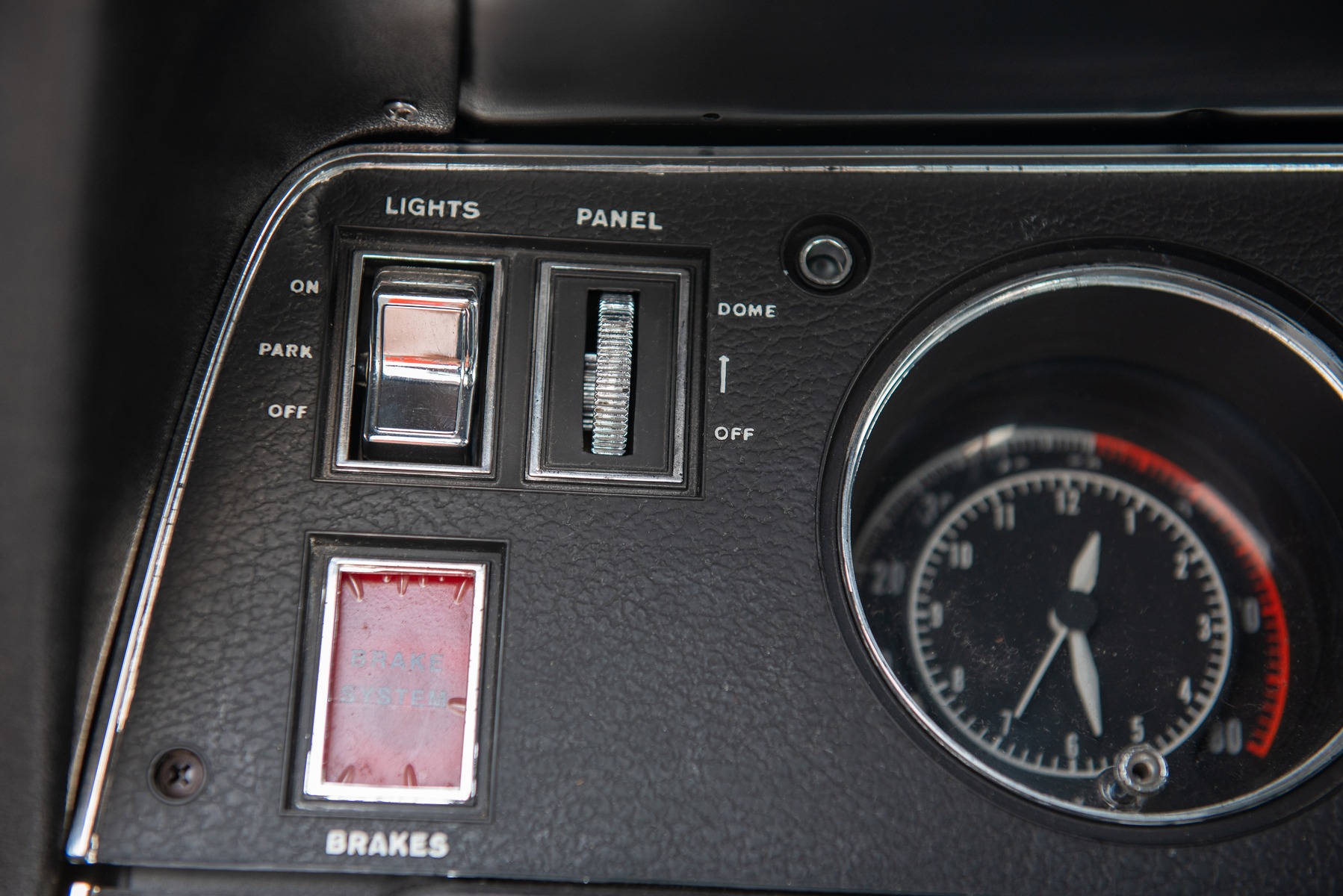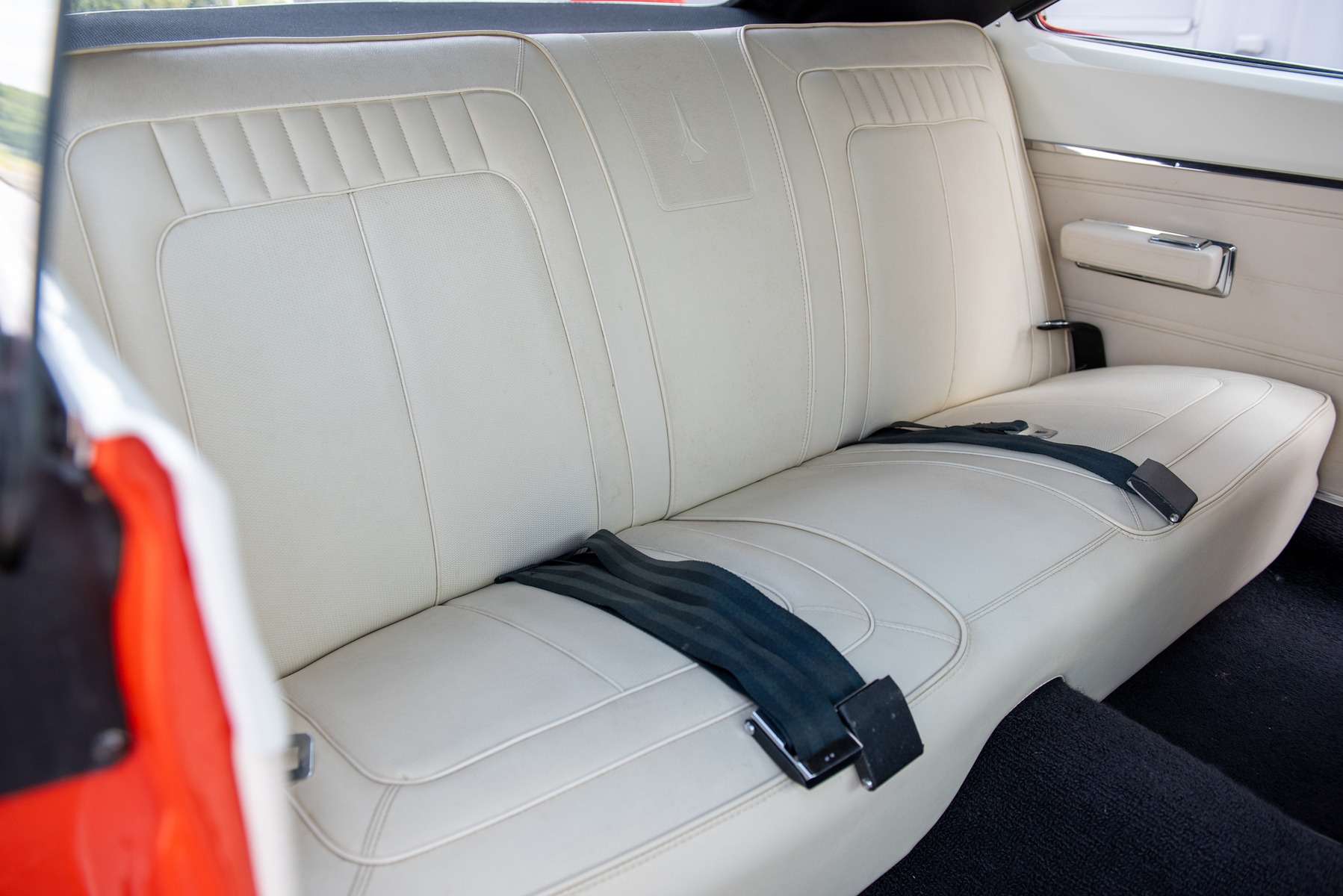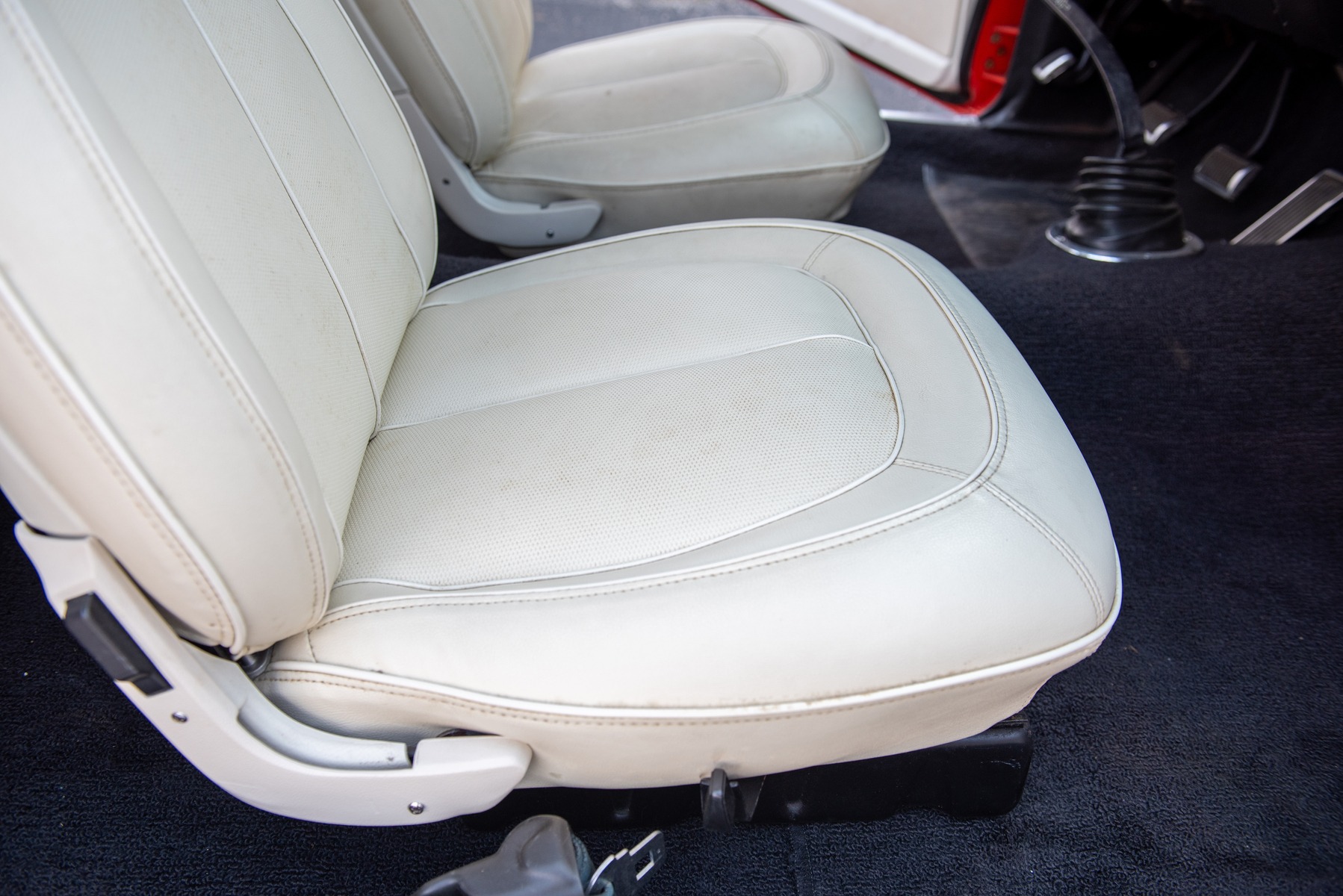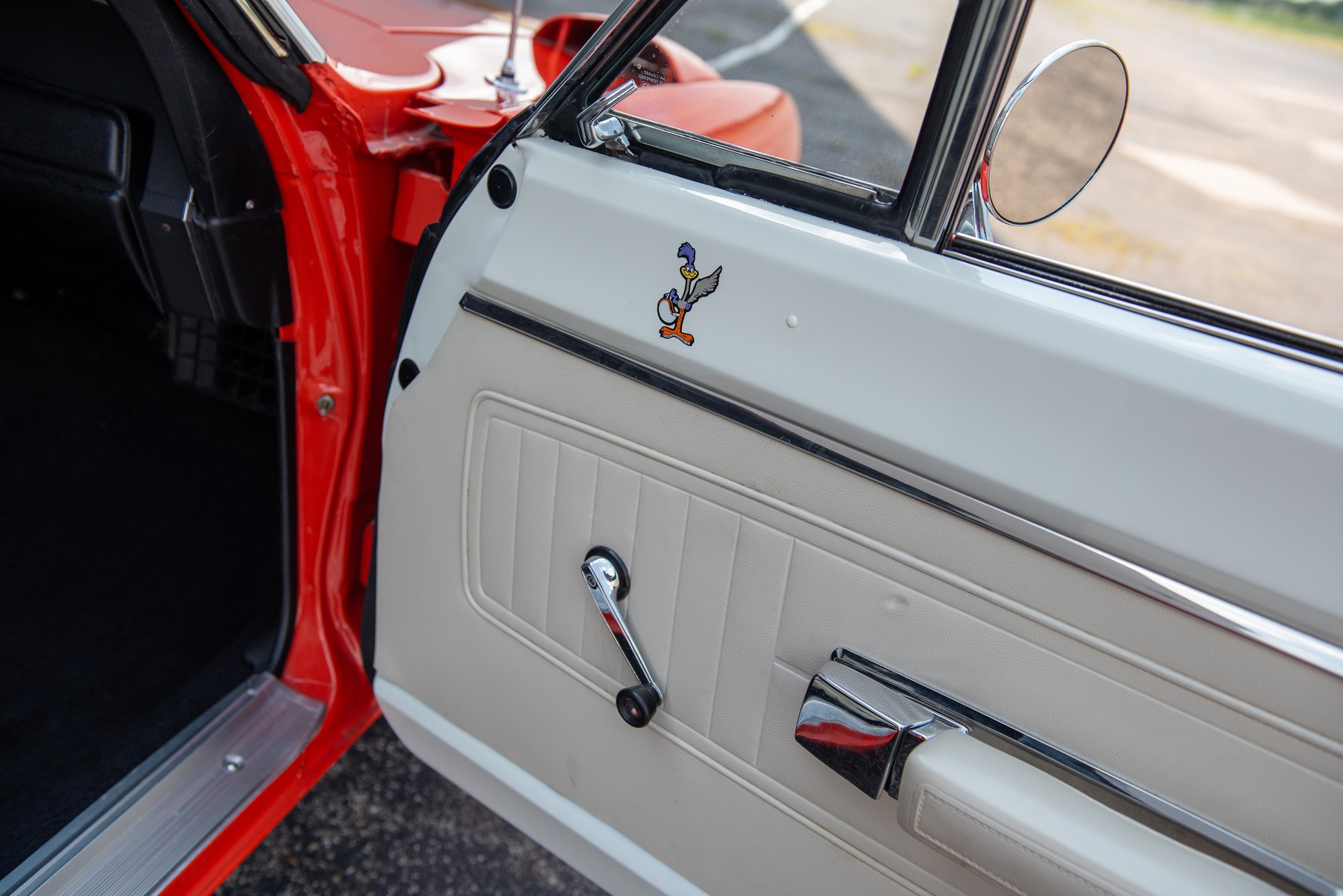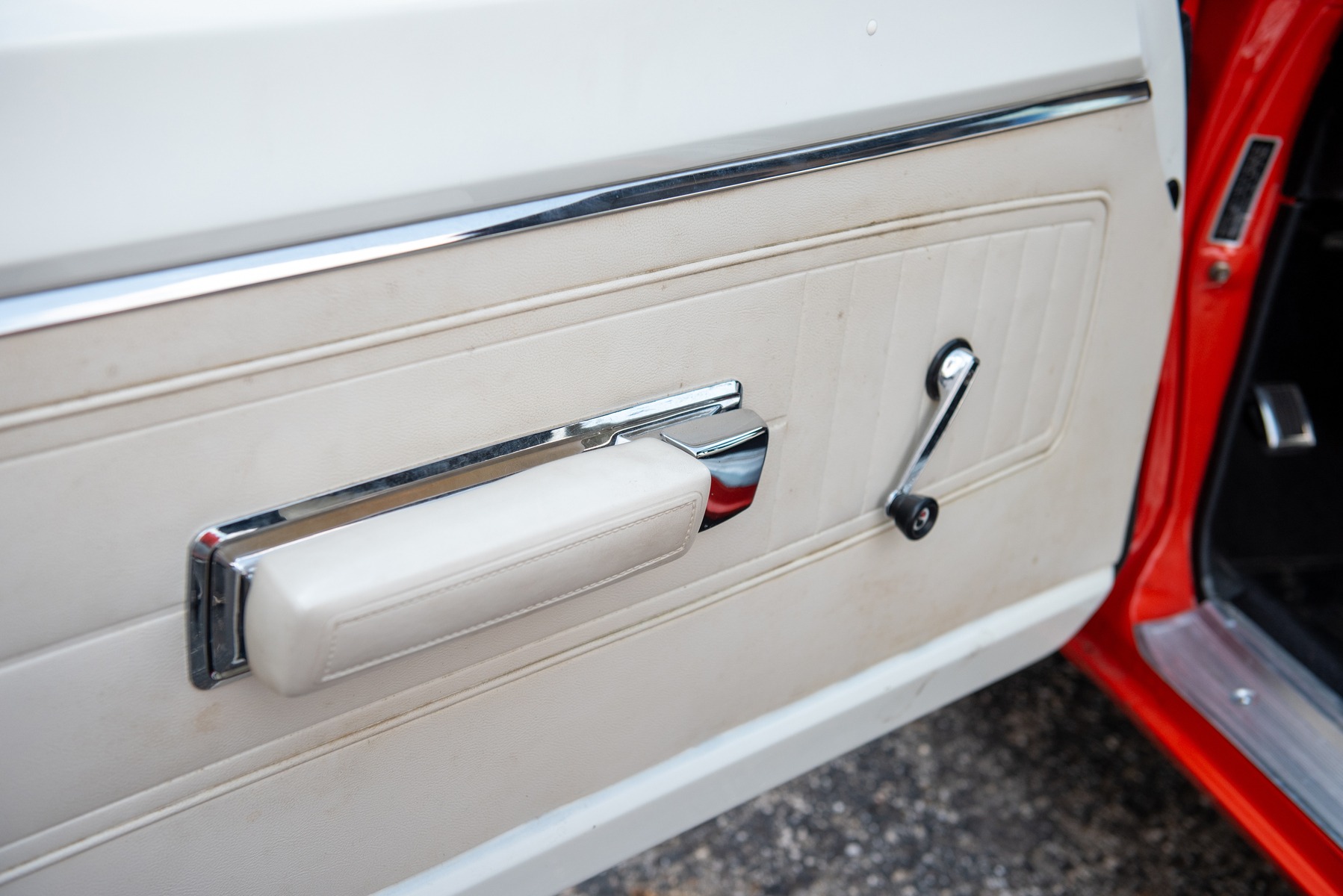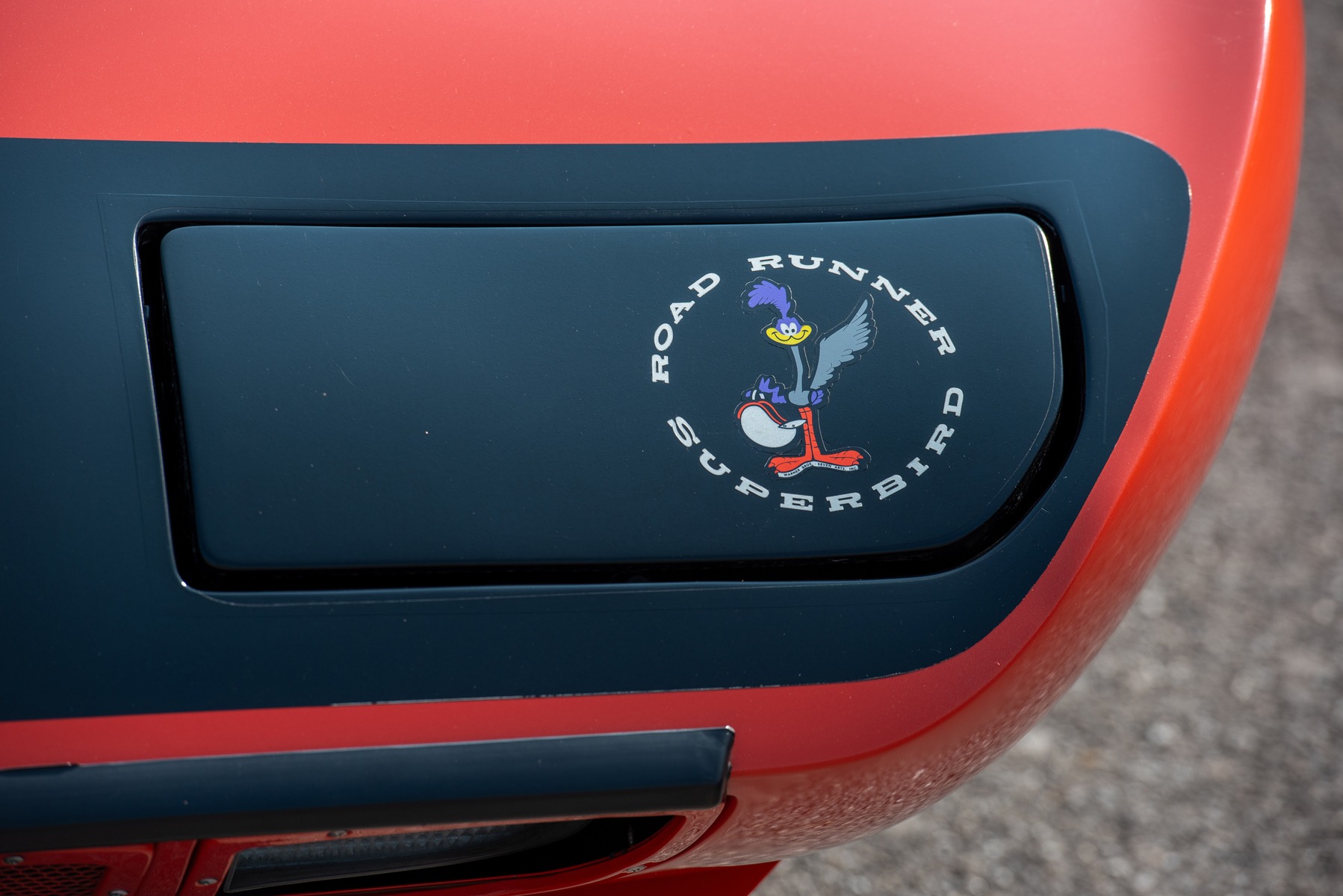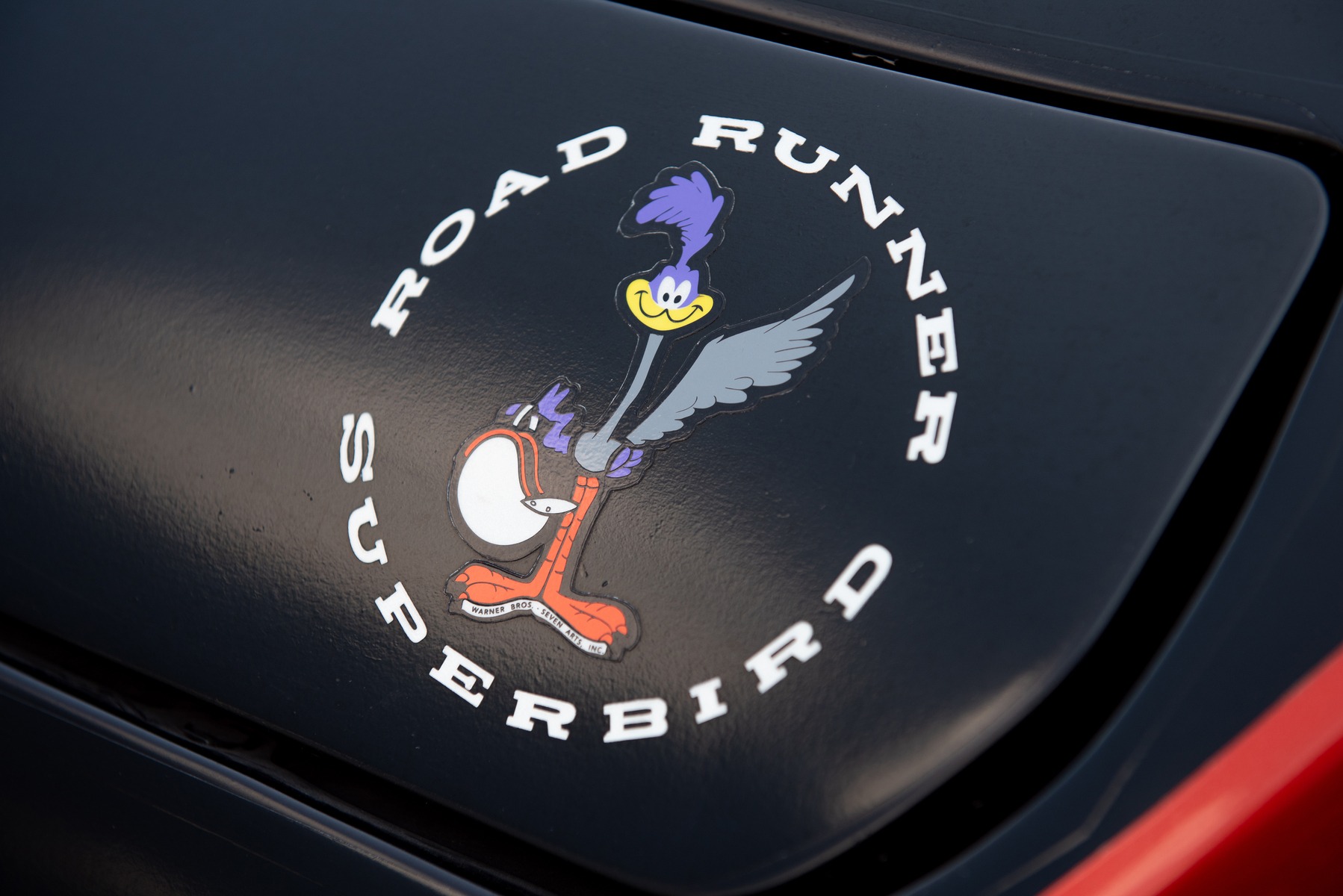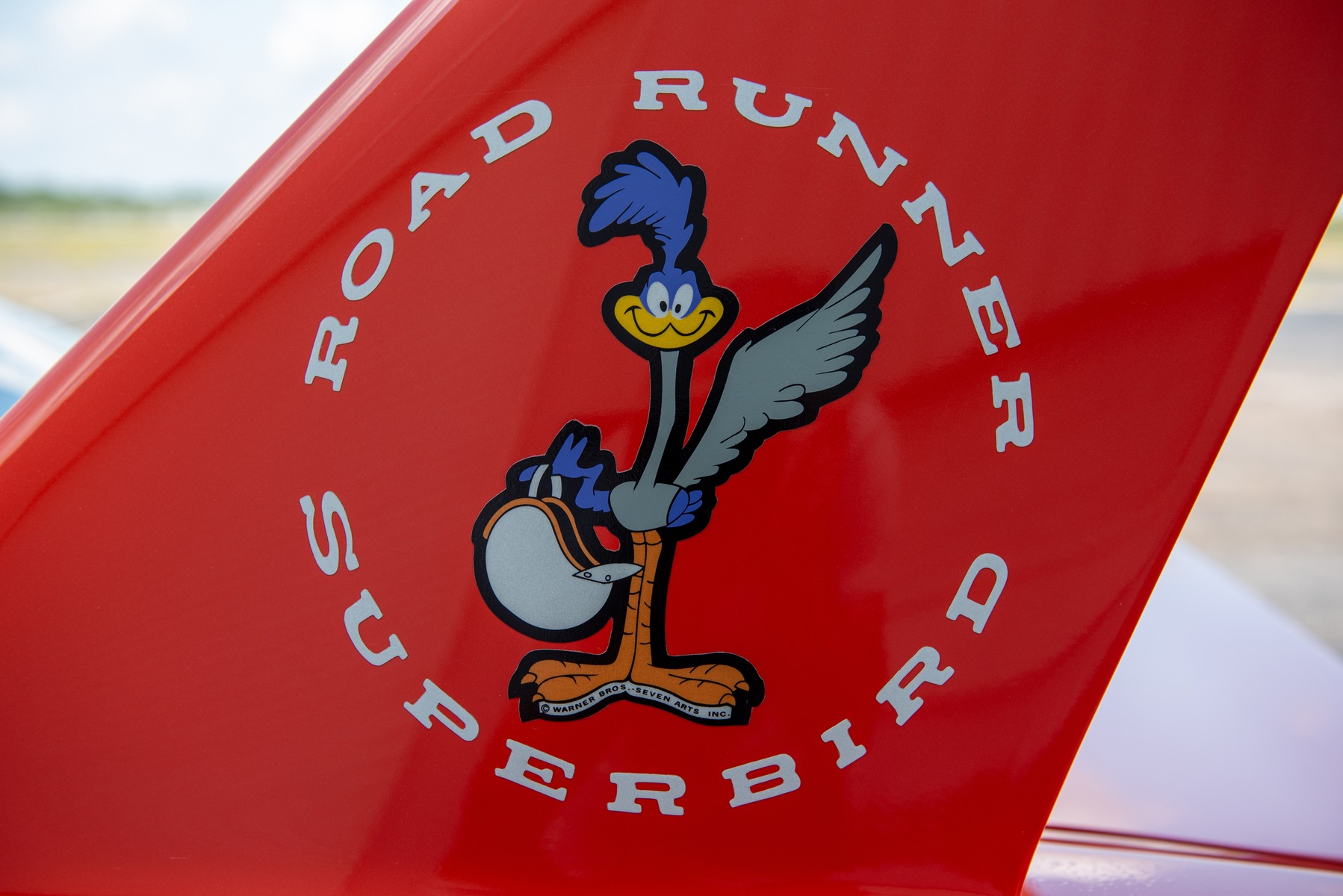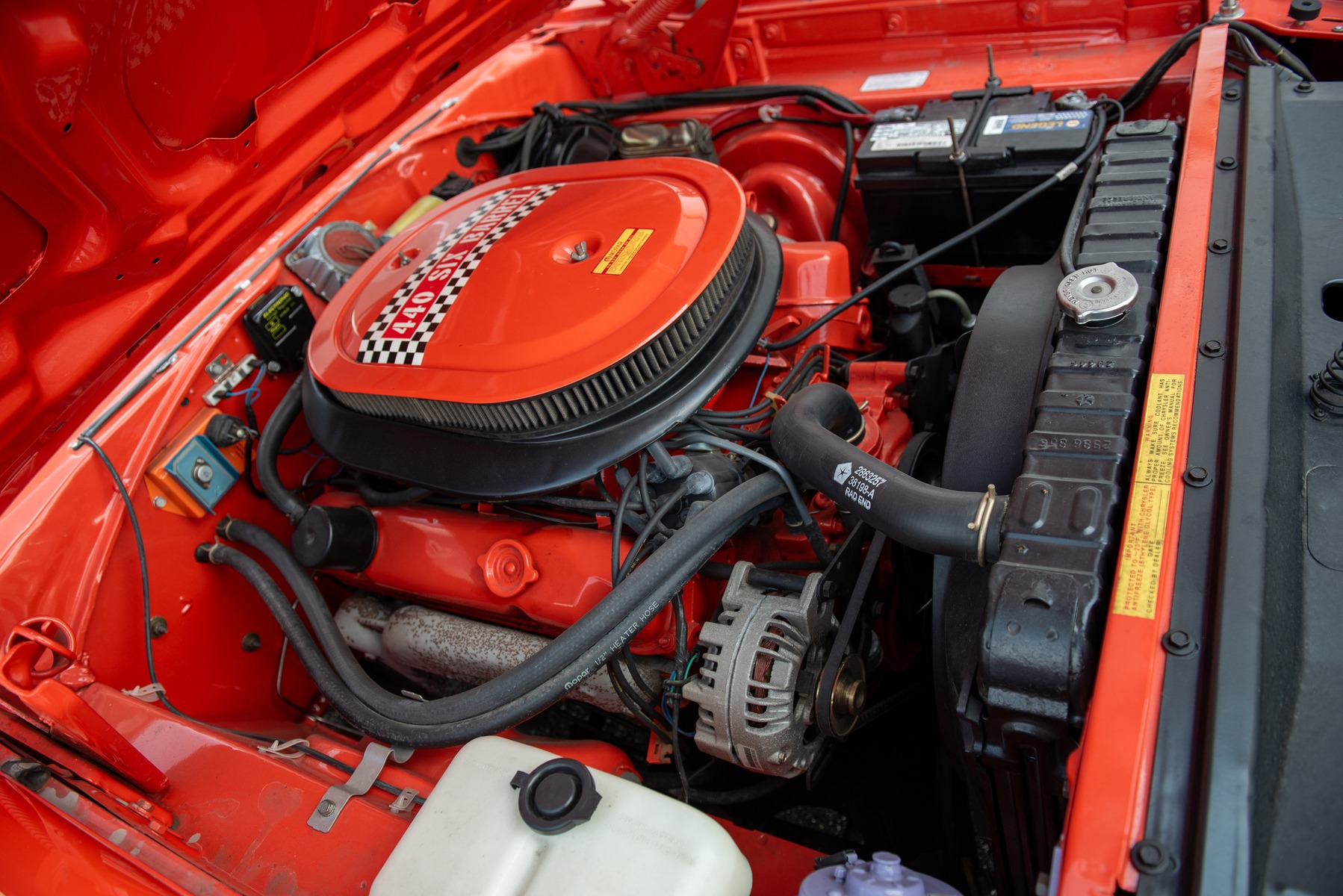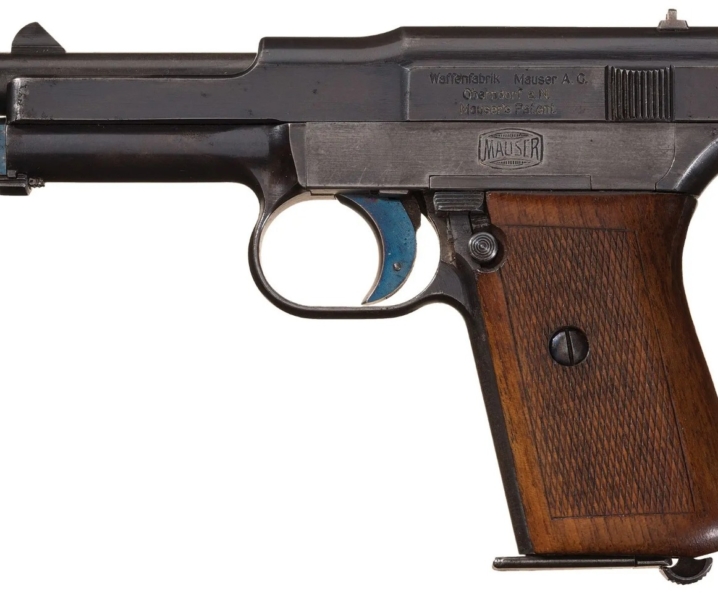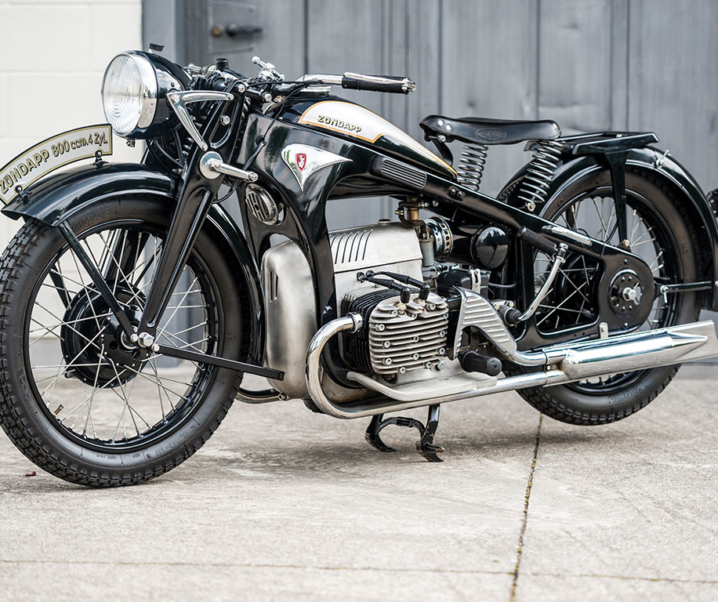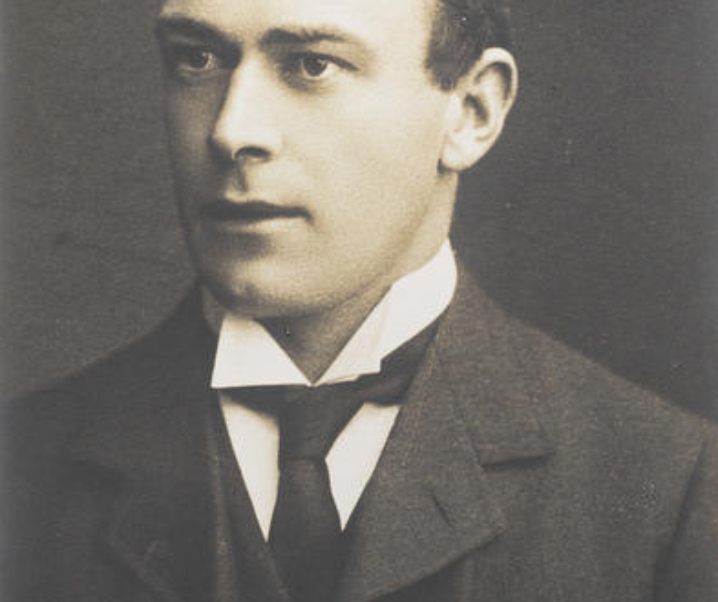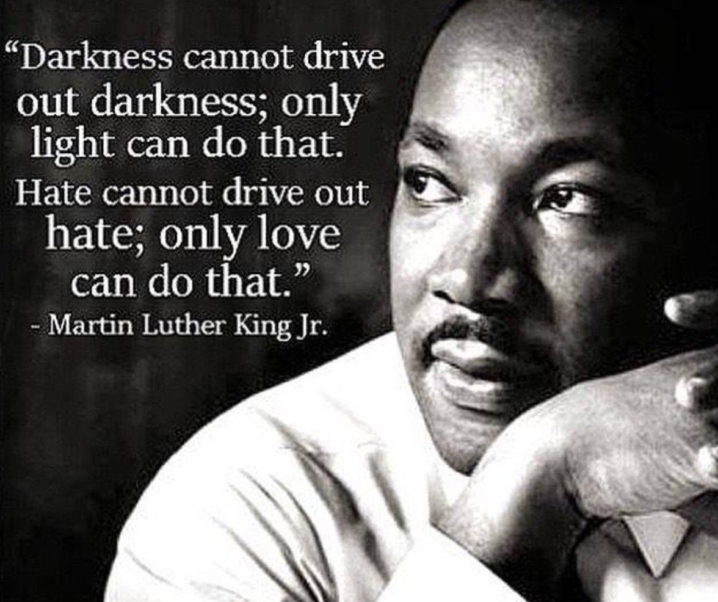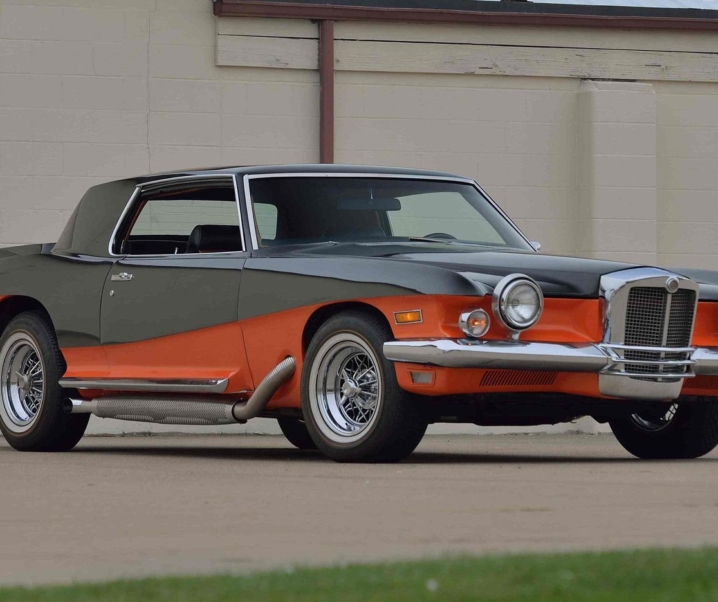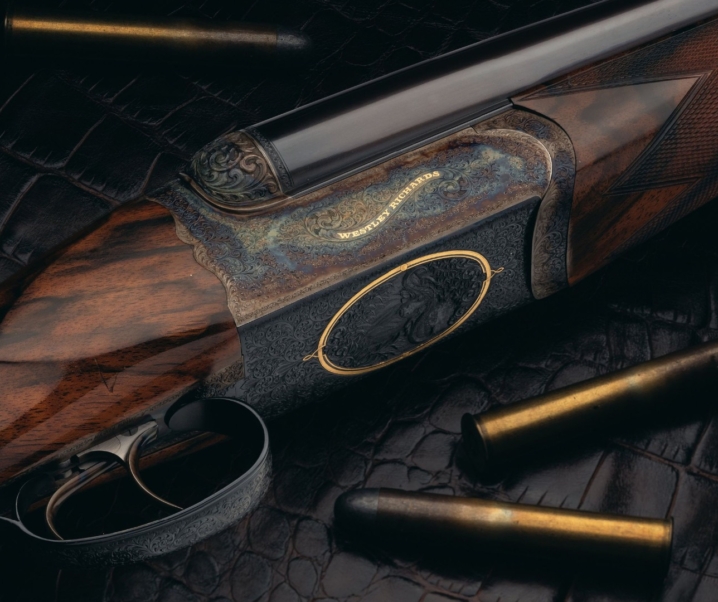The Plymouth Road Runner Superbird was created to be a NASCAR winner for the 1970 competition season. The car was created with aerodynamics designed by a rocket scientist named John Pointer and the work by his team transformed the Plymouth from being an “also-ran” to being a winner, driven by star driver Richard Petty.
Fast Facts
- The Plymouth Road Runner Superbird was Chrysler’s next phase development that began with the Dodge Charger R/T and Dodge Charger Daytona.
- The secret to the Plymouth Road Runner Superbird’s success was two-fold: aerodynamics by rocket scientist John Pointer, and driver Richard Petty.
- The Plymouth Road Runner Superbird brought a swag of NASCAR victories and podiums in the 1970 competition year.
- The Road Runner Superbird turned out to be a bit too successful for its own good however and for the 1971 competition year NASCAR changed the rules restricting engine capacity and rendering the car unable to compete.
- A 1970 Plymouth Road Runner Superbird is to be offered for sale by RM Sotheby’s at their Hershey 2024 auction to be held over October 9-10, 2024.
The “Road Runner” of “Loony Tunes” fame was a high speed flightless bird with a cartoon given ability to avoid being eaten by the crafty “Wile E. Coyote”. The Road Runner’s “scientific” name was “Accelleratii Incredibus” and so it was a perfect name for a NASCAR car that could be bought at the local dealership and used for driving enjoyment on public roads.
In fact you could own one of these Plymouth Road Runner cars and use it as your daily driver – the 1960’s-1970’s was indeed a wonderful time to be alive.
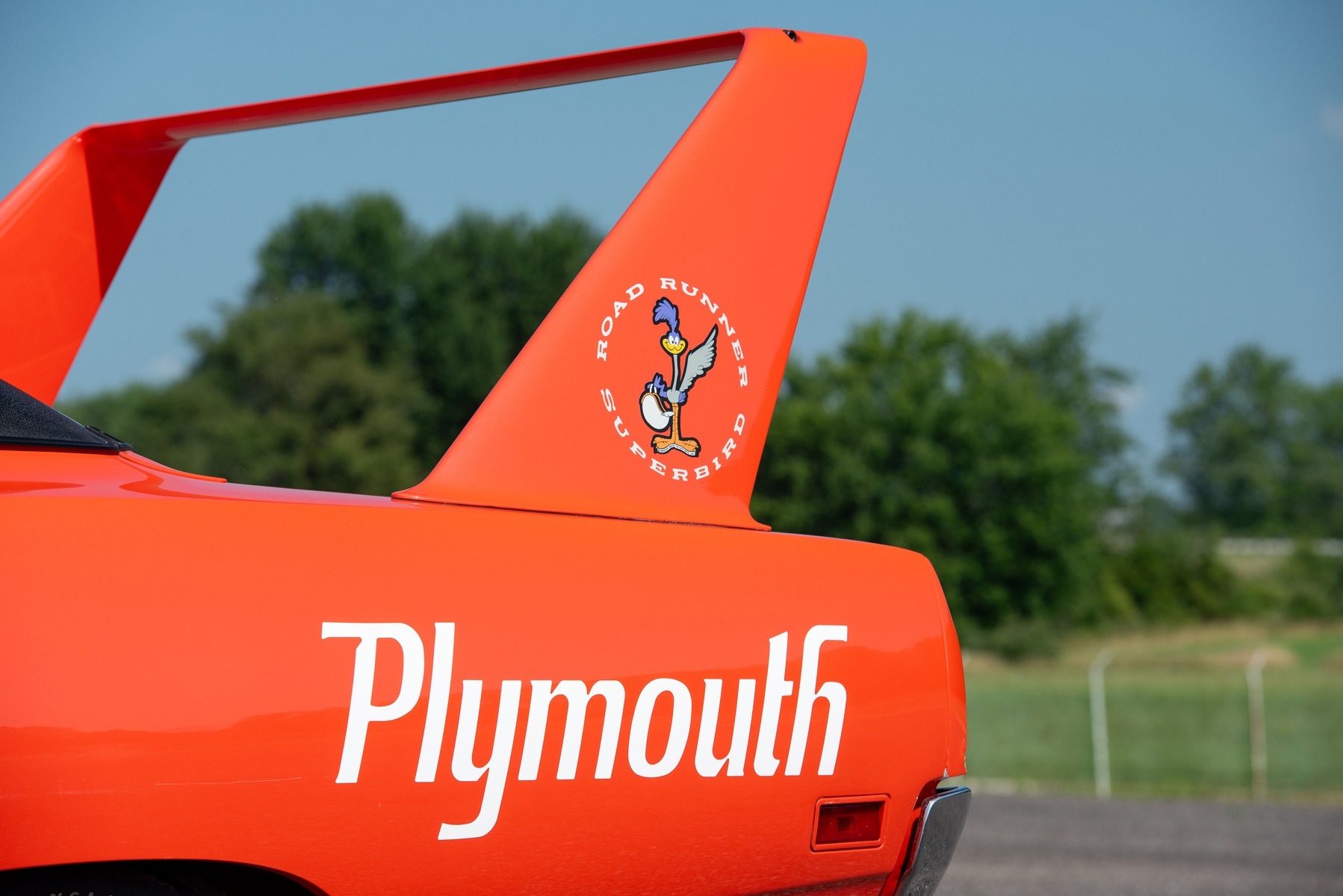
The Road Runner’s nemesis was “Wile E. Coyote” whose “scientific” name was “Carnivorous Vulgaris” and just as his name would suggest he was persistently striving to turn the speedy Road Runner into a nice juicy snack, always attempting to use sophisticated “science” and technology to achieve his aim – and never succeeding.
Perhaps there’s a deeper lesson for humanity in that.
The first cartoon was called “Fast and Furry-ous” and you can find it if you click here.
The folks at Chrysler Corporation wanted to win at NASCAR and so they wanted a racing car that would have the same effect on their rivals, Ford and General Motors, as the cartoon Road Runner had on Wile E. Coyote.
And so they created a car with the aim of achieving the Road Runner effect of “Accelleratii Incredibus”: a car that would disappear in a cloud of dust just like the Road Runner of Loony Tunes fame.
Amazingly Plymouth would actually achieve this, and achieve it with such profound success that NASCAR would have to change their rules because the car was too fast for the racing conditions of the time: tracks, tires, and brakes in particular.
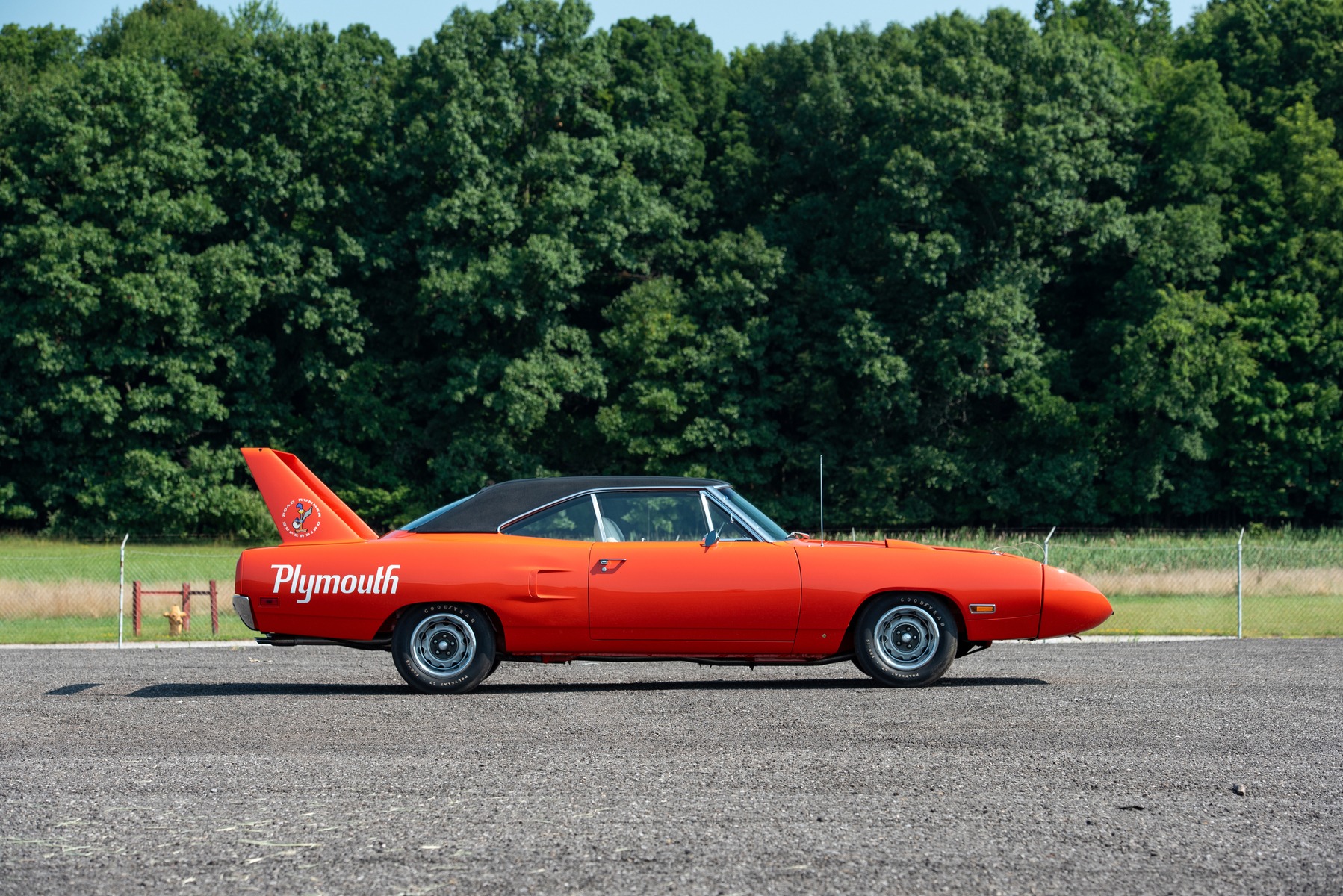
There were to be two similar cars created by Chrysler for NASCAR, both based on the Chrysler B platform, and both using near identical engines and drive trains. One was the Plymouth Road Runner, and the other was the Dodge Charger.
Both featured the fashionably 1960’s “Coke Bottle” body styling, and the Charger became a television show star in the form of the “General Lee” automobile in the series “The Dukes of Hazard“.
The story that would lead to the creation of the NASCAR winning Plymouth Road Runner Superbird actually began with the development work on her sister automobile, the Dodge Charger.
The bodywork of the Plymouth and the Dodge had been created by designers in the styling departments, and their efforts had been to make the cars as visually attractive as they could. This was perfectly fine for road cars but not likely to produce a competitive racing car.
Chrysler created a high performance version of the Dodge Charger which was called the Charger R/T and that model became a film star as the car driven by the villains in the famous car chase in the movie “Bullit” in which Steve McQueen, himself an accomplished racing driver, drives a Ford Mustang.
But the requirements for a road car – even for an action film star stunt car – were rather different to what was needed in a NASCAR racing car. The aim was to attain or exceed 200 mph and maintain stability around those banked curves.
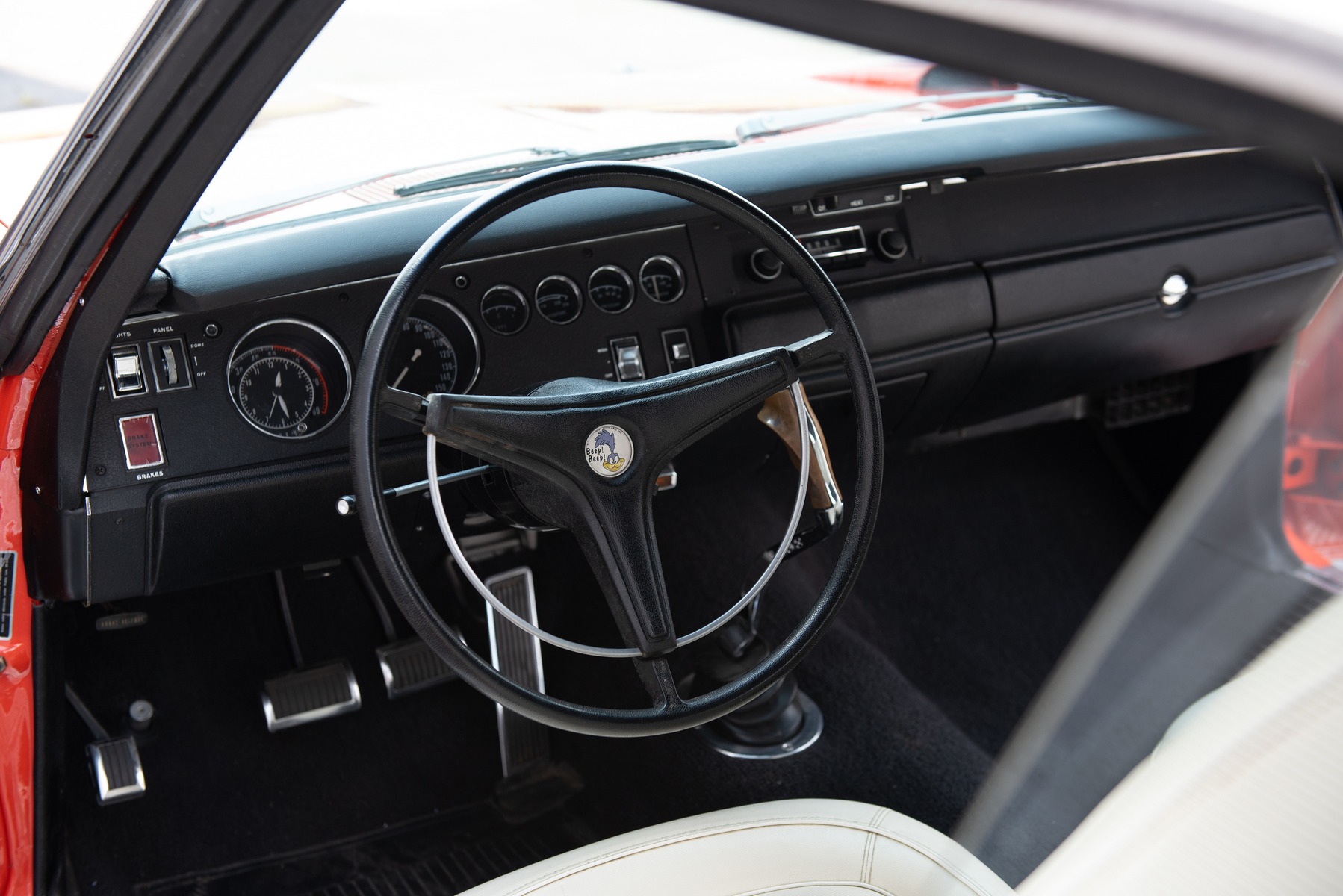
It was time for aesthetics to take a back-seat and for aerodynamics to reign supreme – even if the car might not look so stylish anymore.
So, needing a design created by science and not art, Chrysler turned to a rocket scientist named John Pointer who worked in Chrysler’s missile division. Pointer was to be the man to turn the Dodge Charger R/T into a road missile that even Steve McQueen in his Ford Mustang could not catch.
Pointer’s design work began at the front of the car with an extended nose to not only give the car a bullet shape to slip through the air easily, but also to produce down-pressure by creating a low air pressure zone under the front of the car to basically suck it down onto the tarmac.
It was of course also necessary to keep the rear of the car from lifting off the track and Pointer understood that a wing at the rear was going to be the way to achieve that. However, he also understood that placing that wing down low on the trunk/boot lid would place it in an area of air turbulence which would make it much less effective than if it were placed fully in the airflow that passed over the car’s roof.
So Pointer’s wing was fitted on high extensions that lifted it up just above roof height and into the direct air flow path.
All this development work was done in absolute secrecy: Chrysler’s team wanted to make sure that they were going to give both Ford and General Motors a surprise, and they wanted that surprise to be as jaw-dropping as possible.
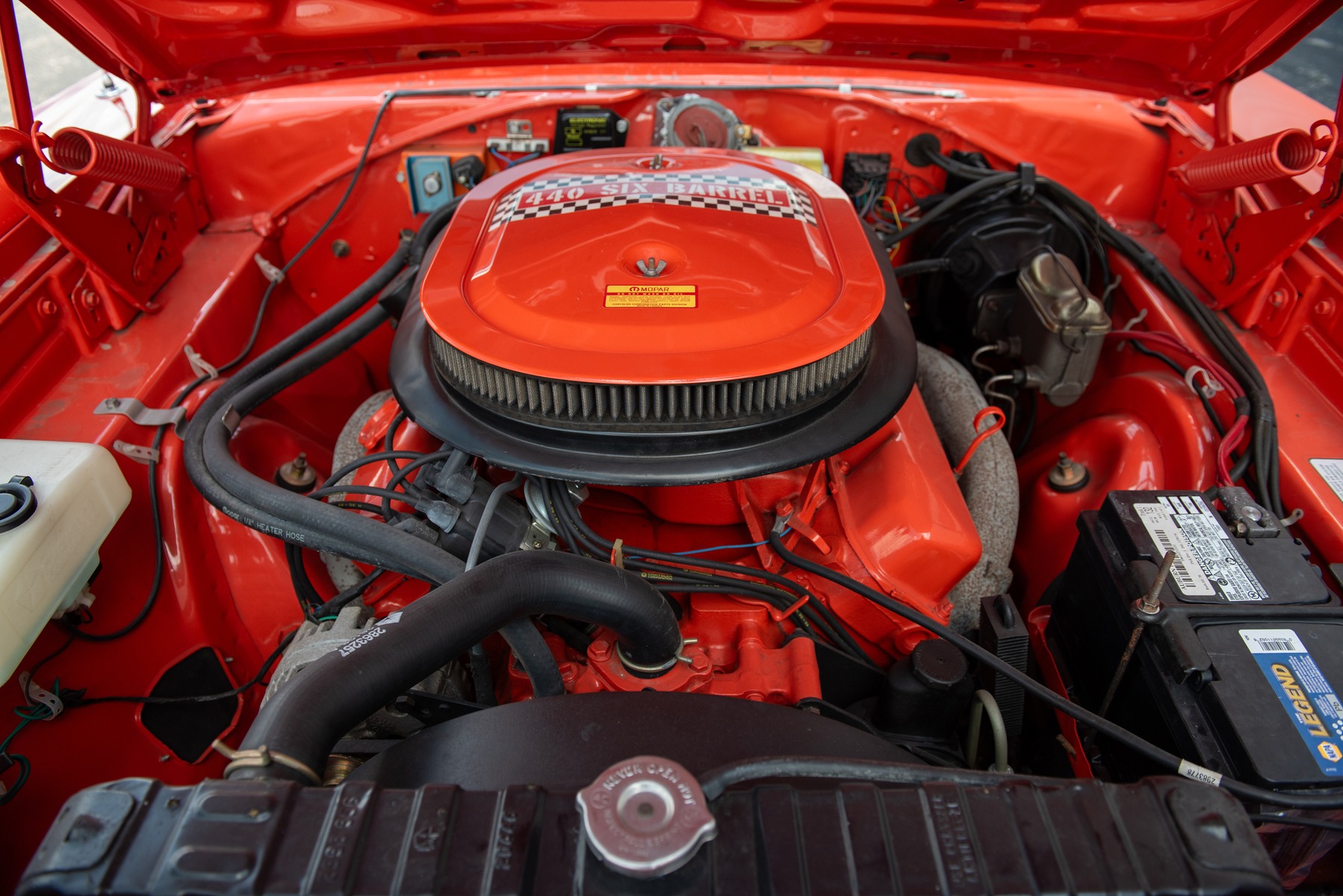
The Dodge Charger that emerged from the “science not art” work done by Pointer and the design team was the Dodge Charger Daytona. Chrysler’s team tested the car in secret in the summer of 1969 on the 4.75-mile oval at their Chelsea Proving Grounds to make sure they were onto a winner: and then once the team were confident that the car would achieve exactly what they hoped for it they took it to the Alabama Motor Speedway on September 14, 1969, for their first race. Suffice to say they delivered the jaw-dropping surprise to the Ford and General Motors teams that they had hoped for.
Dodge subsequently ran testing on the Alabama Motor Speedway (renamed Talladega Superspeedway) on March 24, 1970 with Buddy Baker driving and attained a speed of 200.447 mph: proving that the car was indeed as quick as they had thought it to be.
(Video courtesy SITKASAILS@YouTube).
There was another benefit to the performance of the new aerodynamic Dodge Charger Daytona. Plymouth’s star race driver Richard Petty had left the team in 1968 because they couldn’t field a car that was competitive against the Ford and GM opposition. The Dodge Charger Daytona demonstrated that Chrysler’s teams, both Dodge and Plymouth, now had a competitive weapon which was not just competitive, but it was a winner.
So Richard Petty decided to return to the Plymouth team and race with them for the 1970 season. All that was needed was a Plymouth racing car that was as quick as the Dodge Charger Daytona, and Plymouth were going to be able to supply that.
The Plymouth that would be the foundation for this 1970 racing car was to be the Plymouth Road Runner, given a similar aerodynamic treatment to the Charger Daytona, but with some improvements.
The nose was made a tad longer and more sleek, while the rear wing was moved up to get it even more into the direct airflow free from the turbulence in the area behind the rear window.
These changes did not actually make the car faster, if anything perhaps slightly slower, but they increased the down-force front and rear making the car even more stable at race speeds than its Daytona predecessor. This would enable Richard Petty to push the car to its limits with confidence and improve his ability to win races.
That Plymouth Road Runner was to become the Plymouth Road Runner Superbird – a Road Runner with superpowers – like Superman “faster than a speeding bullet” figuratively speaking: and it was to have Richard Petty behind its steering wheel.
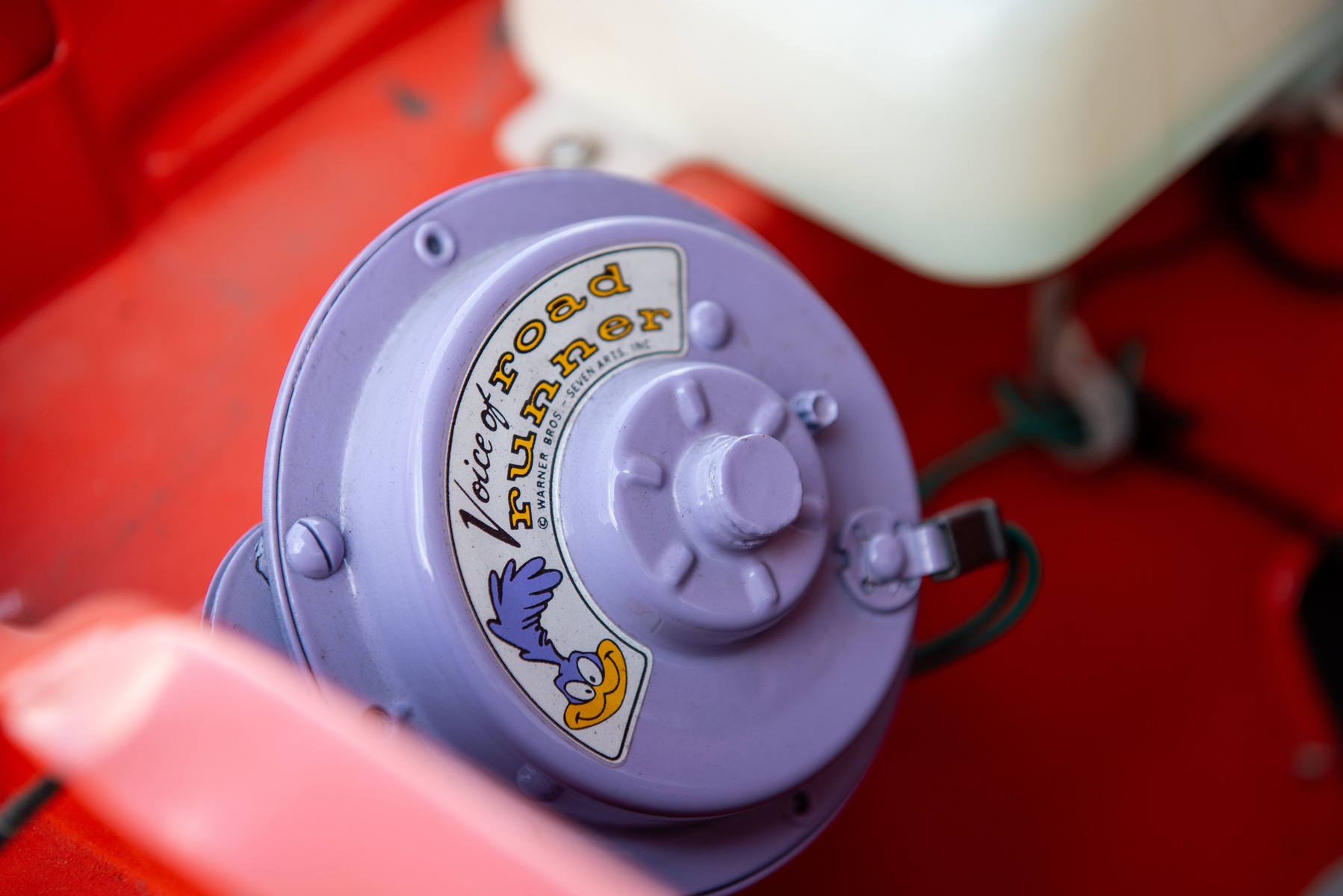
The engine of the racing Road Runner Superbird was a 426 cu. in. (7.0 liter) Hemi V8 with upgraded camshaft, intake manifold and exhaust system to extract 433 hp with torque of 472 ft/lb. This gave the car a standing quarter mile time of 13.5 seconds and standing to 60 mph in 5.5 seconds.
Richard Petty put that performance to good use in the 1970 NASCAR season winning eighteen races, achieving twenty-seven top fives, thirty-one top tens, and nine poles: and possibly giving Ford and GM teams a little taste of what Wile E. Coyote felt as he watched the Road Runner disappear into the distance.
The future looked rather rosy for the Plymouth Road Runner Superbird but the joy was to be short-lived. NASCAR’s organizers realized that these cars had become too fast for the tracks they raced on. They did not want an accident similar to the 1955 Le Mans Disaster to happen and so they knew they needed to slow the cars down some for safety’s sake.
NASCAR’s new rules limited the engine capacity for the aerodynamic cars to 350 cu. in. If the engine capacity was more than that then a weight penalty was applied. It was a rule change that rendered the Road Runner Superbird unable to compete. The flow-on effect of that was for the model to be withdrawn from production, having been on sale for just one year.
The Plymouth Road Runner Superbird became a fairly rare car to find as the years wore on. Survivors in good condition started becoming increasingly valuable and nowadays they remain one of the premier American muscle-cars of the 1960’s-1970’s.
One of these Plymouth Road Runner Superbirds is coming up for sale by RM Sotheby’s at their Hershey 2024 auction to be held over October 9-10, 2024.
You can find the sale page for this car if you click here.
The sale car is fitted with its original numbers matching 440 cu. in. “Six-Pack” V8 engine breathing through three Holley two-barrel carburetors. These engines offer a rather more “use-friendly” driving experience by comparison with the highly strung racing engines.
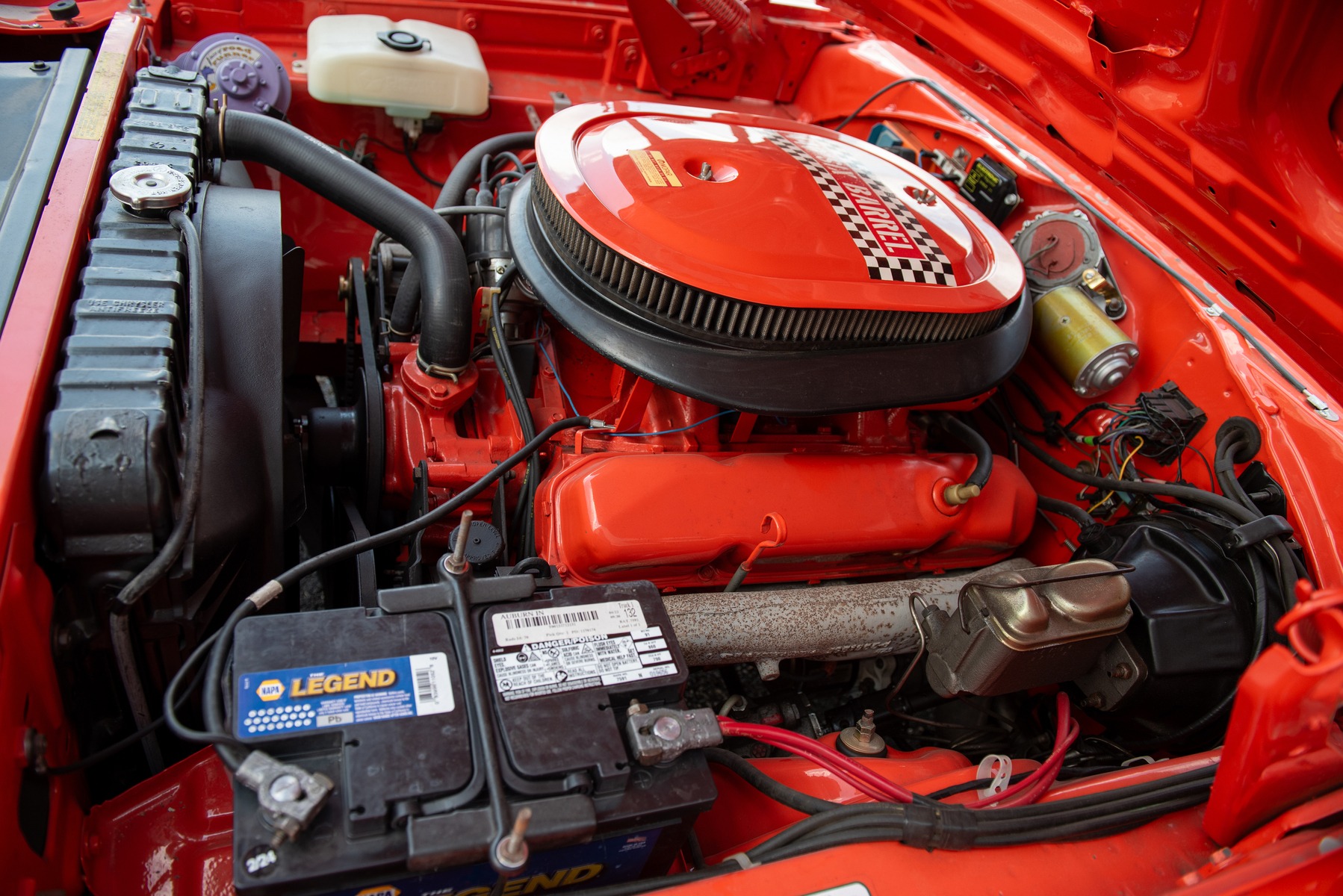
The car’s fender tag states it was constructed with a Dana 9¾ inch rear axle, 3.54:1 Sure Grip differential, and four-speed manual transmission with iconic “pistol grip” shifter.
The car has the hallmarks of a full restoration and is finished in Tor Red (EV2) over a white bucket-seat interior without console (P6XW).
Inside the passenger compartment are MOPAR’s iconic “Tic-Toc-Tach” combination gauge, as well as the Road Runner’s signature “Beep, Beep” Looney Tunes inspired horn.
In a sense this car is a bit of a 1970 time-capsule: a rather nice example from the classic muscle-car era that was so much fun to live through for those of us who experienced it.
Picture Credits: All pictures Corey Escobar ©2024 Courtesy of RM Sotheby’s.

Jon Branch is the founder and senior editor of Revivaler and has written a significant number of articles for various publications including official Buying Guides for eBay, classic car articles for Hagerty, magazine articles for both the Australian Shooters Journal and the Australian Shooter, and he’s a long time contributor to Silodrome.
Jon has done radio, television, magazine and newspaper interviews on various issues, and has traveled extensively, having lived in Britain, Australia, China and Hong Kong. His travels have taken him to Indonesia, Israel, Italy, Japan and a number of other countries. He has studied the Japanese sword arts and has a long history of involvement in the shooting sports, which has included authoring submissions to government on various firearms related issues and assisting in the design and establishment of shooting ranges.

